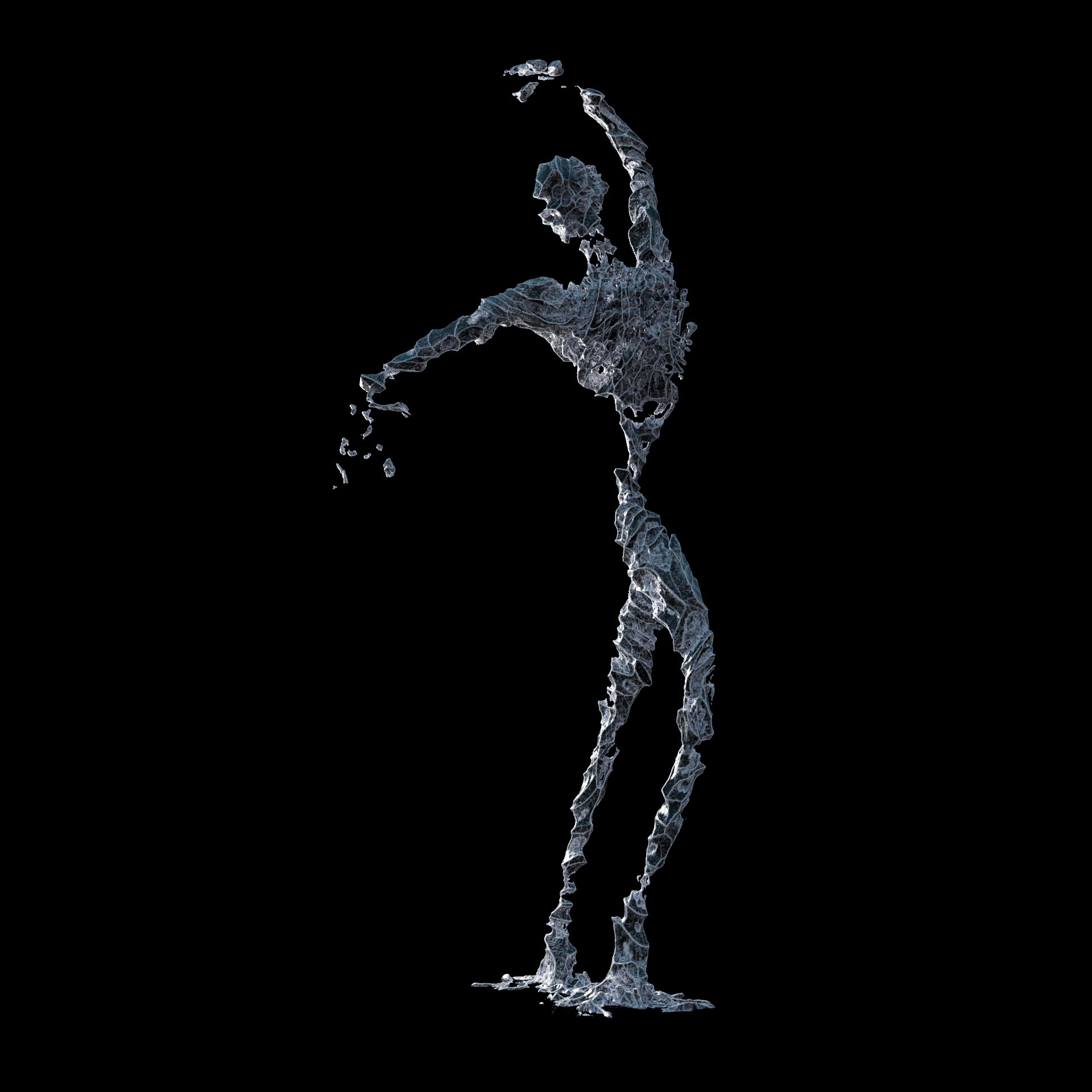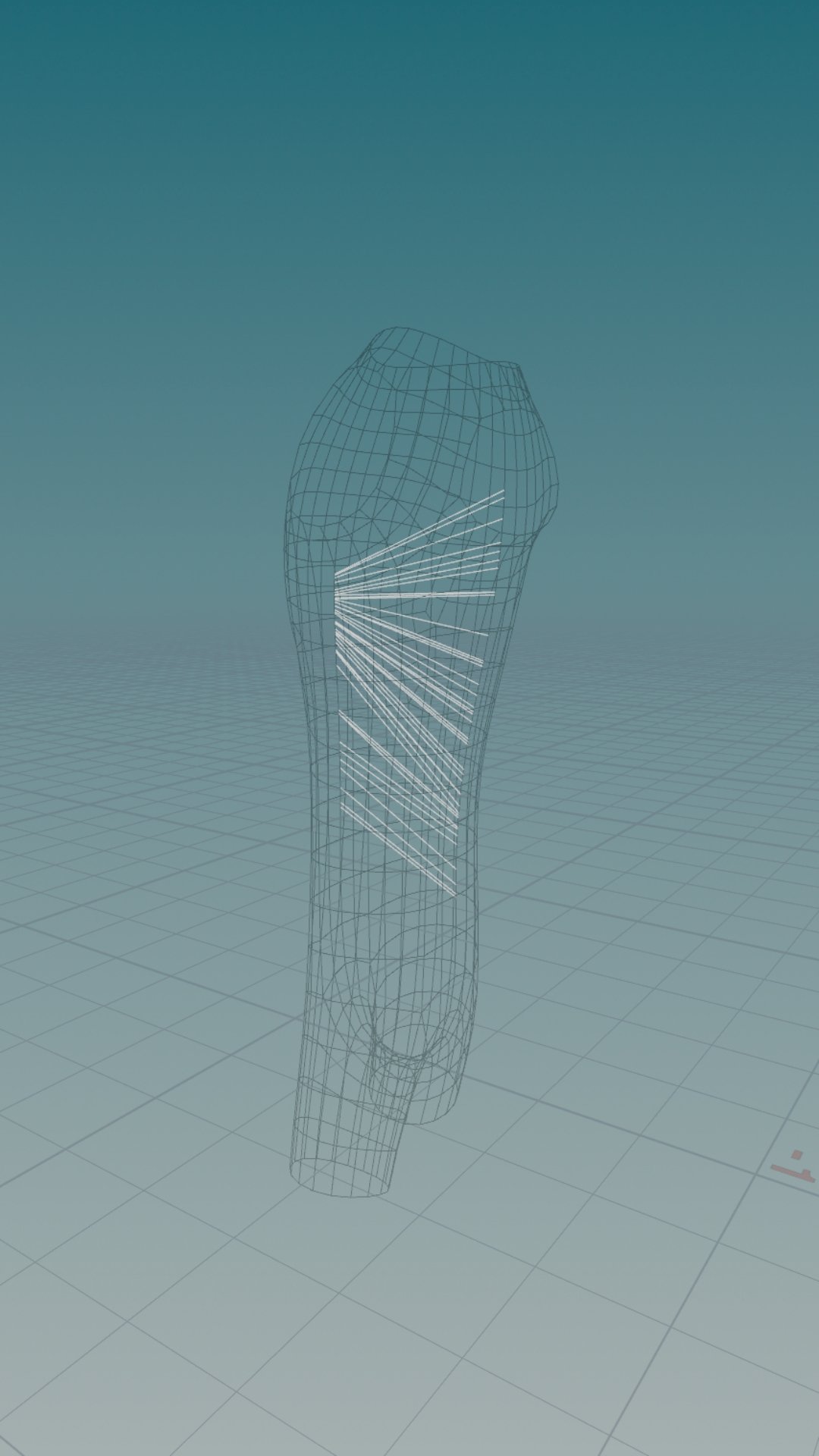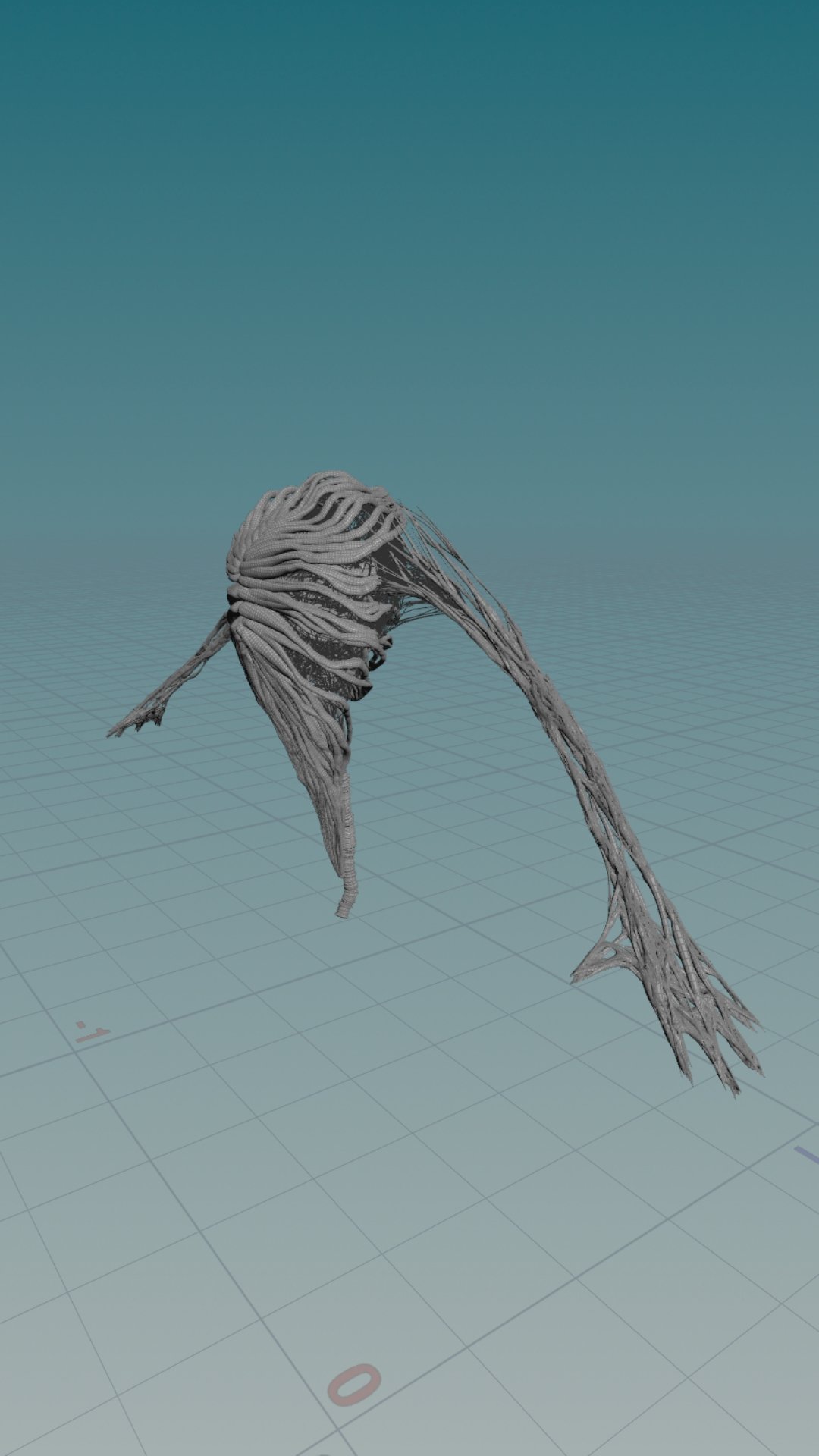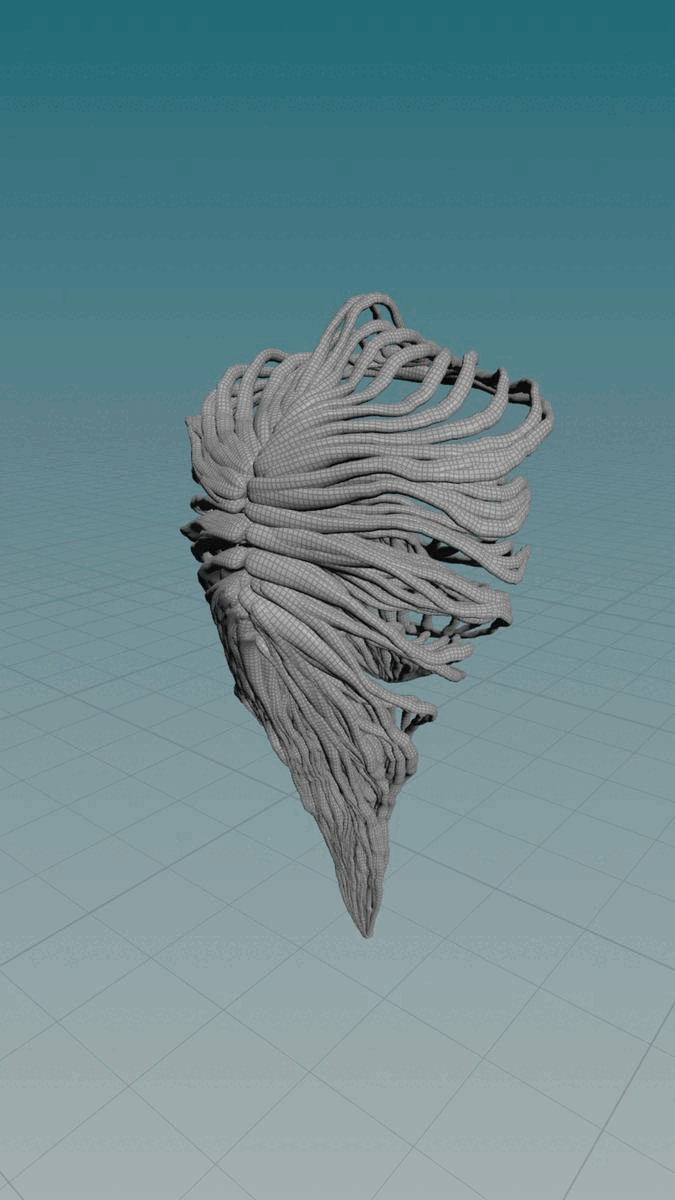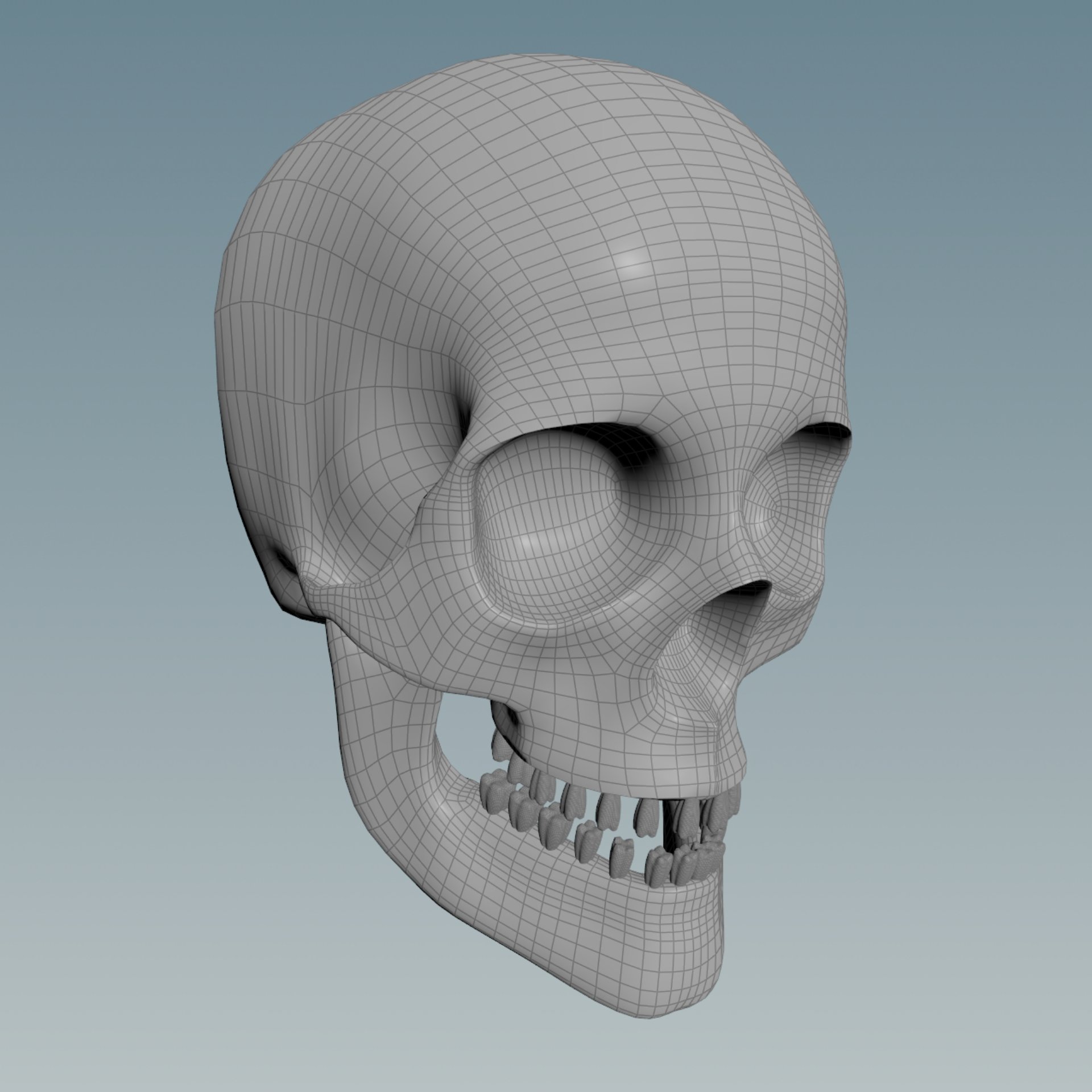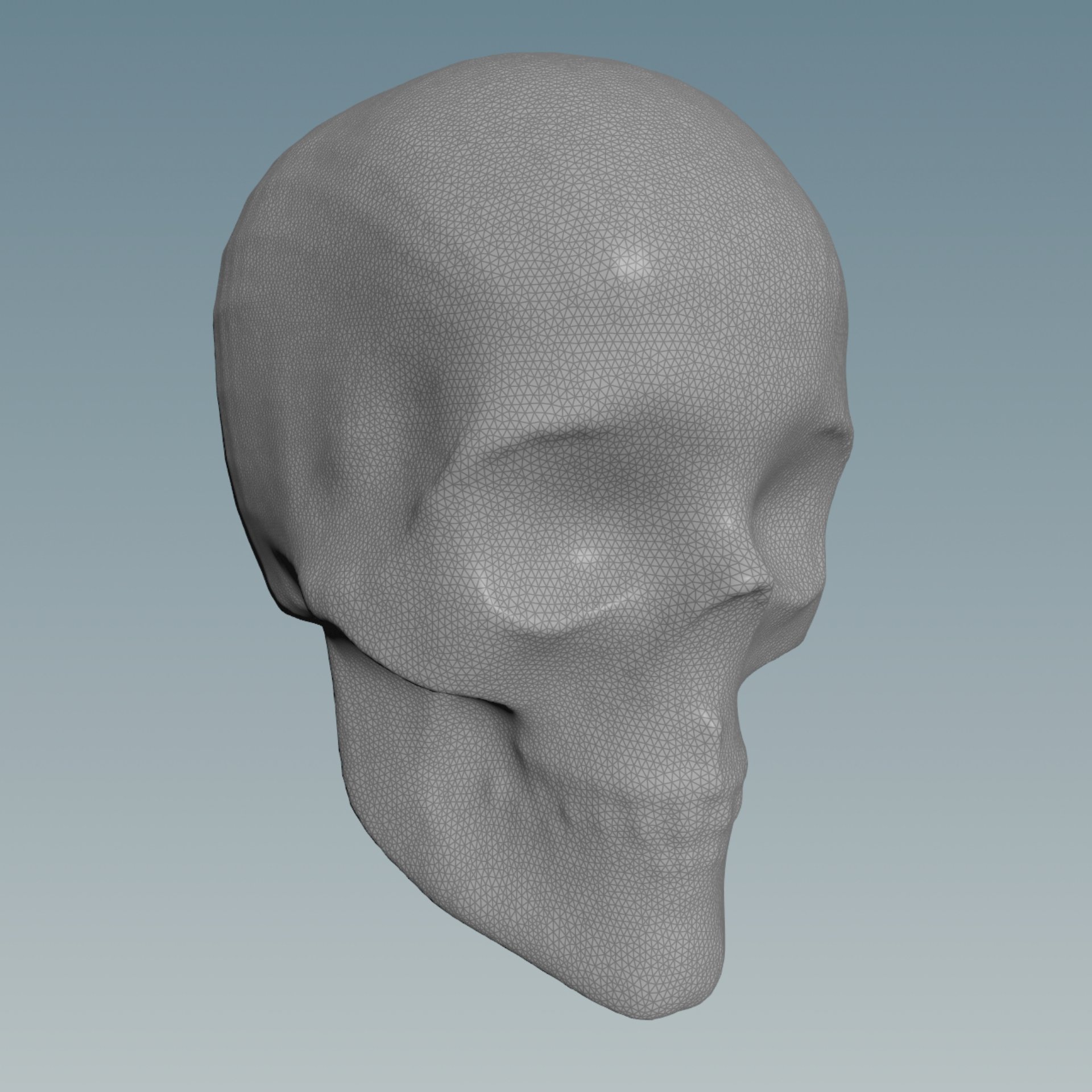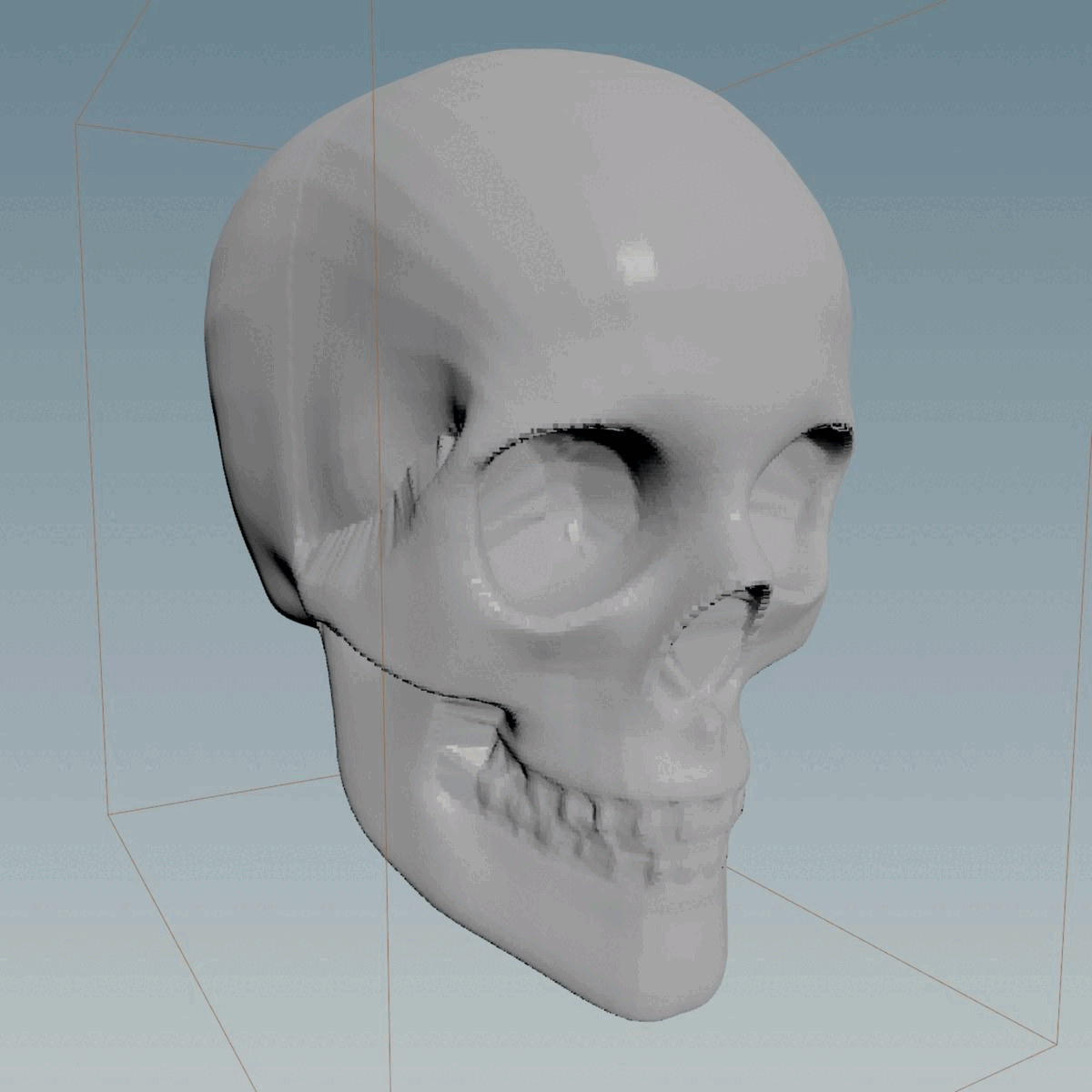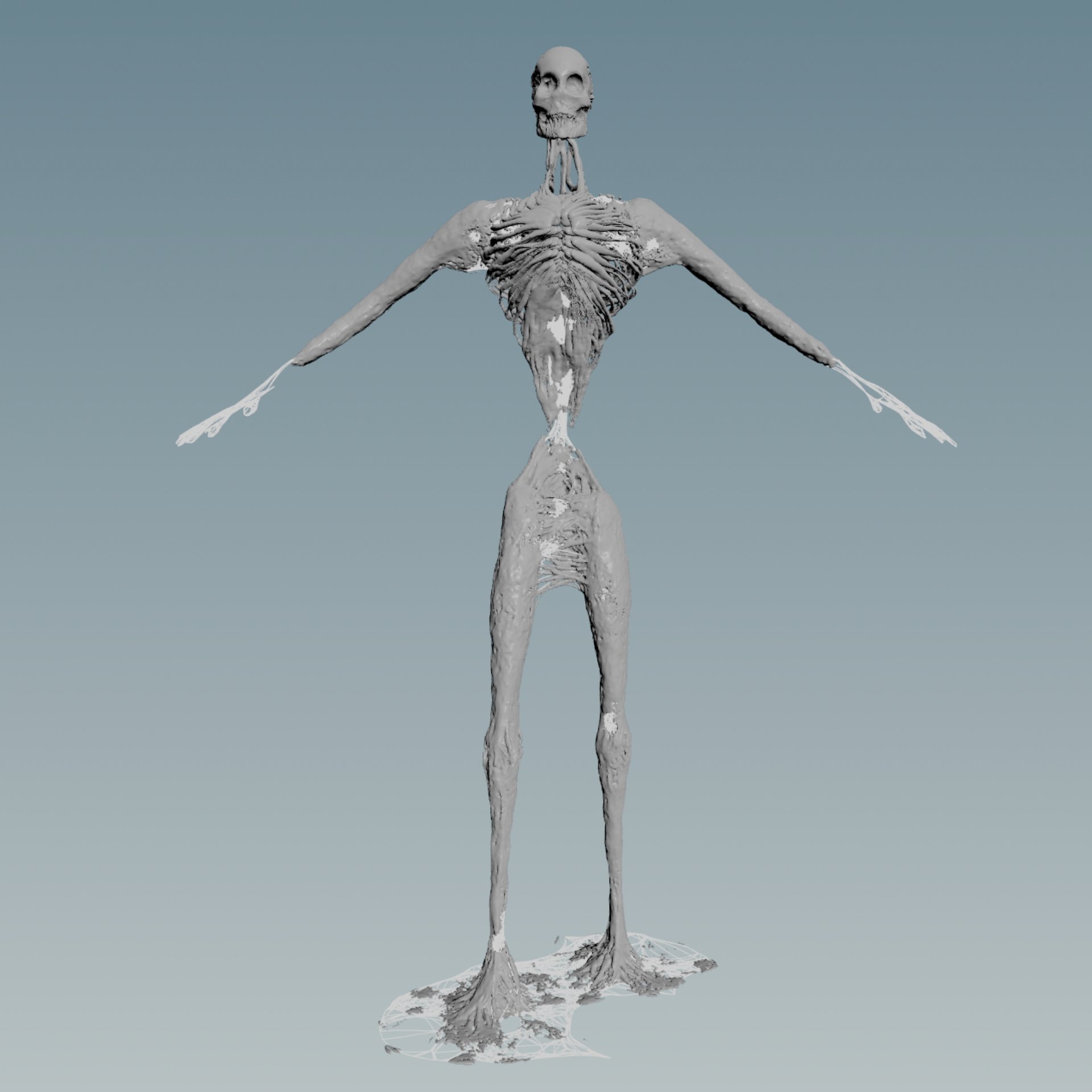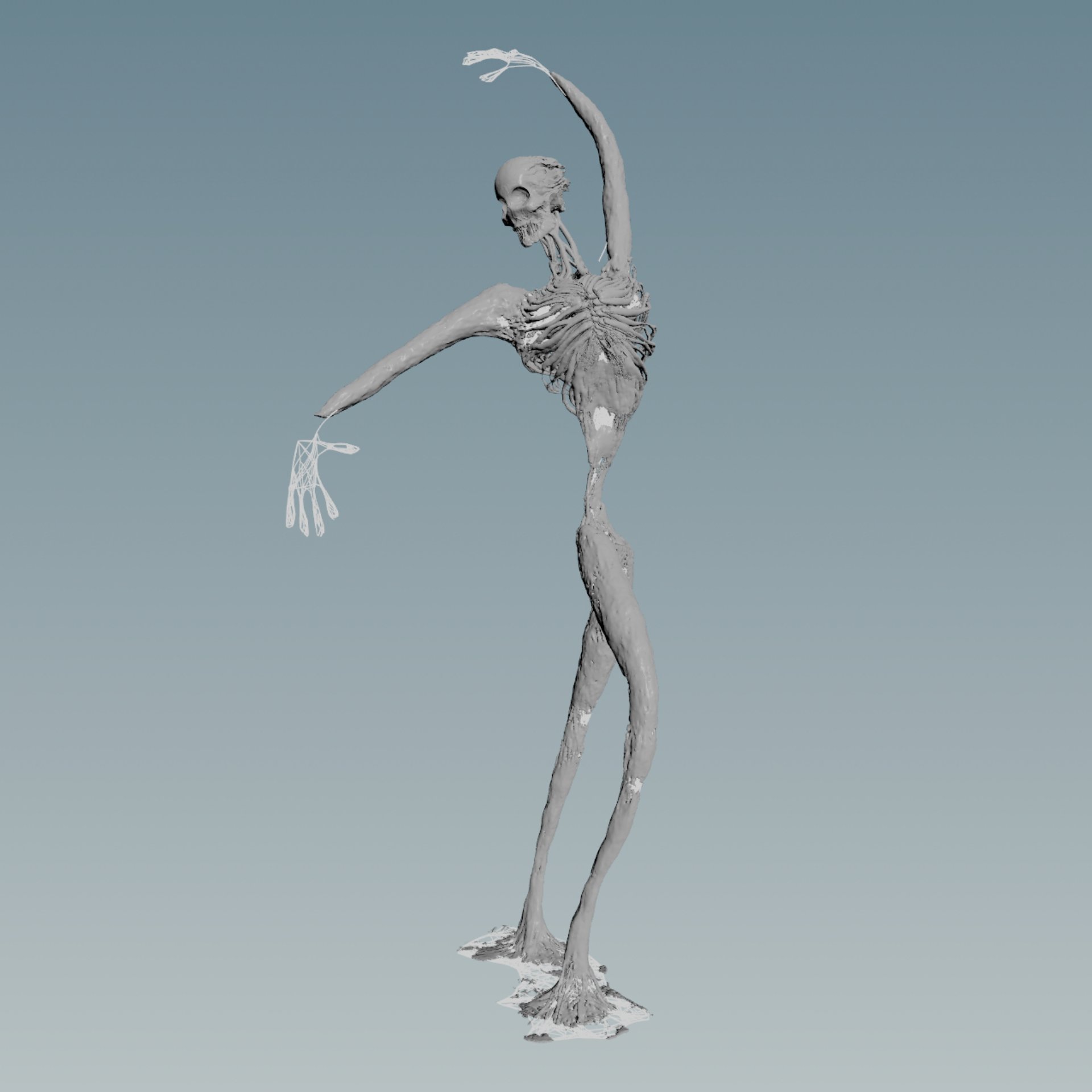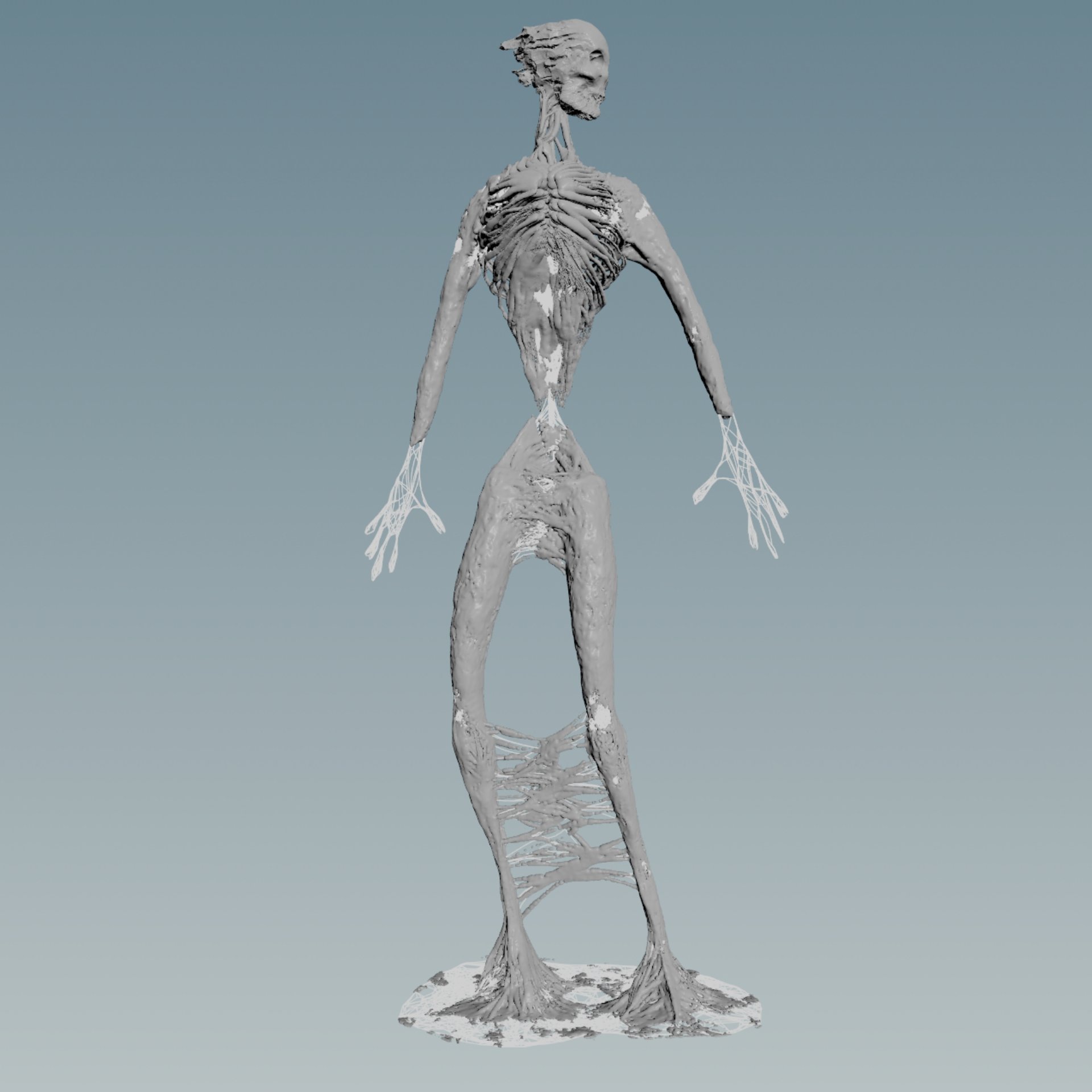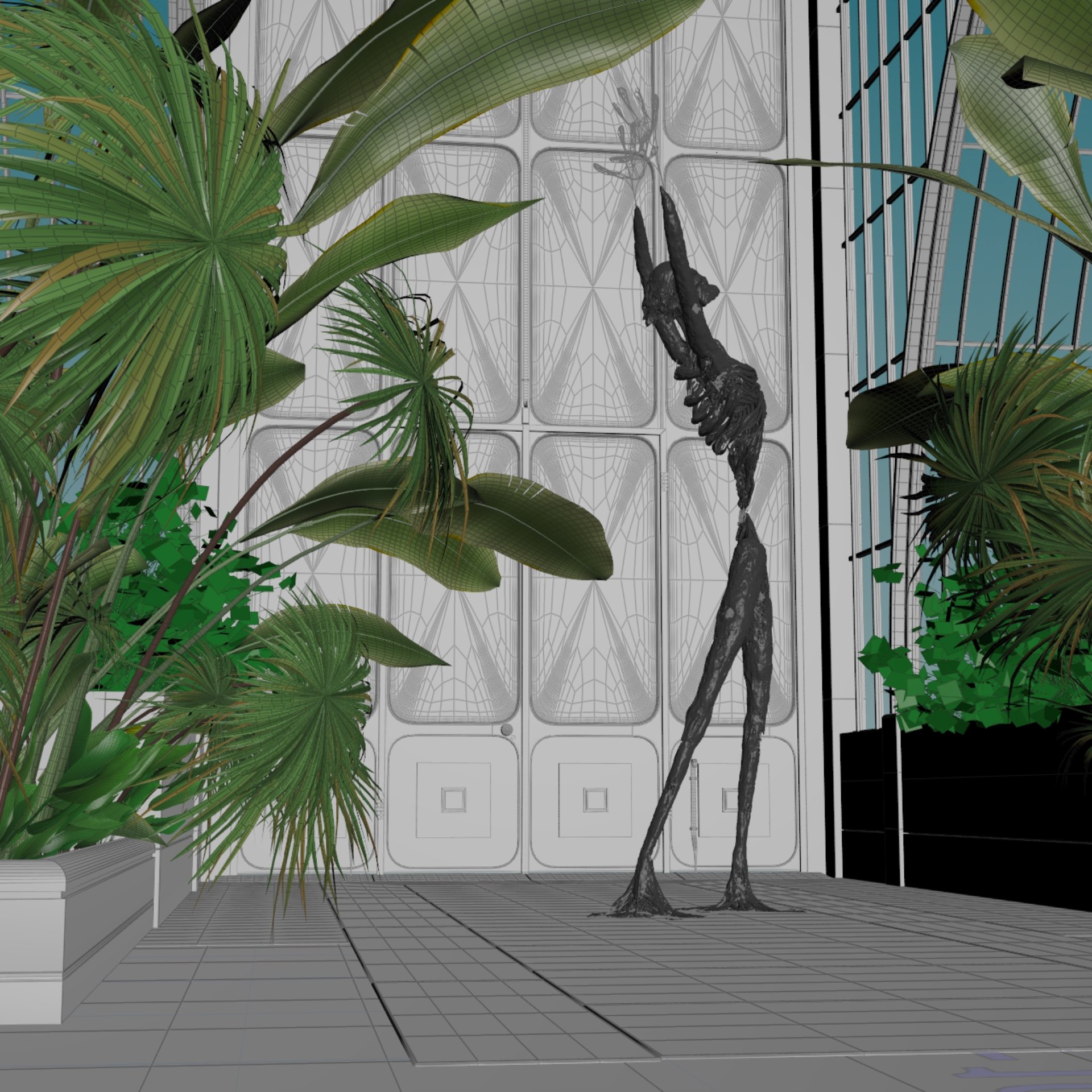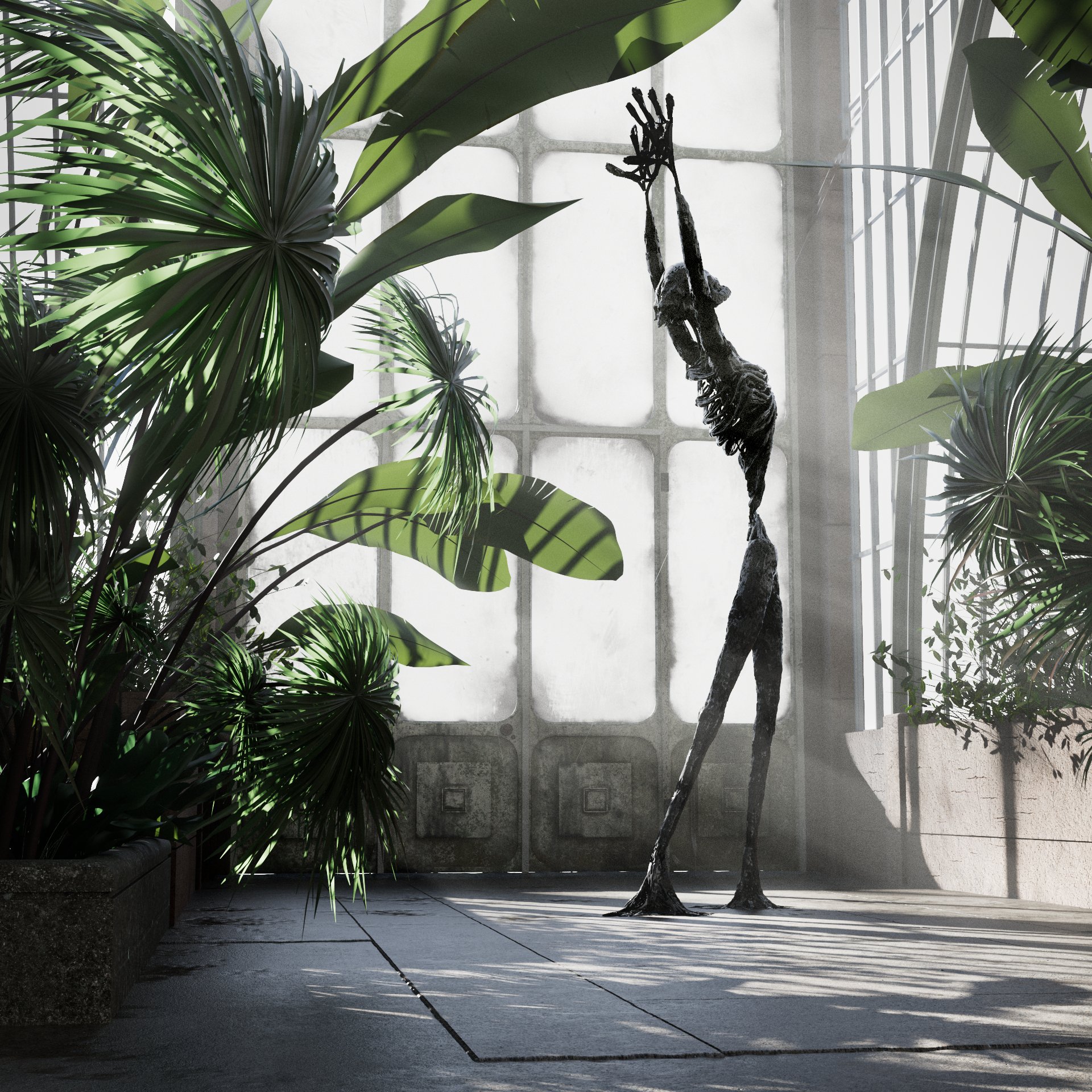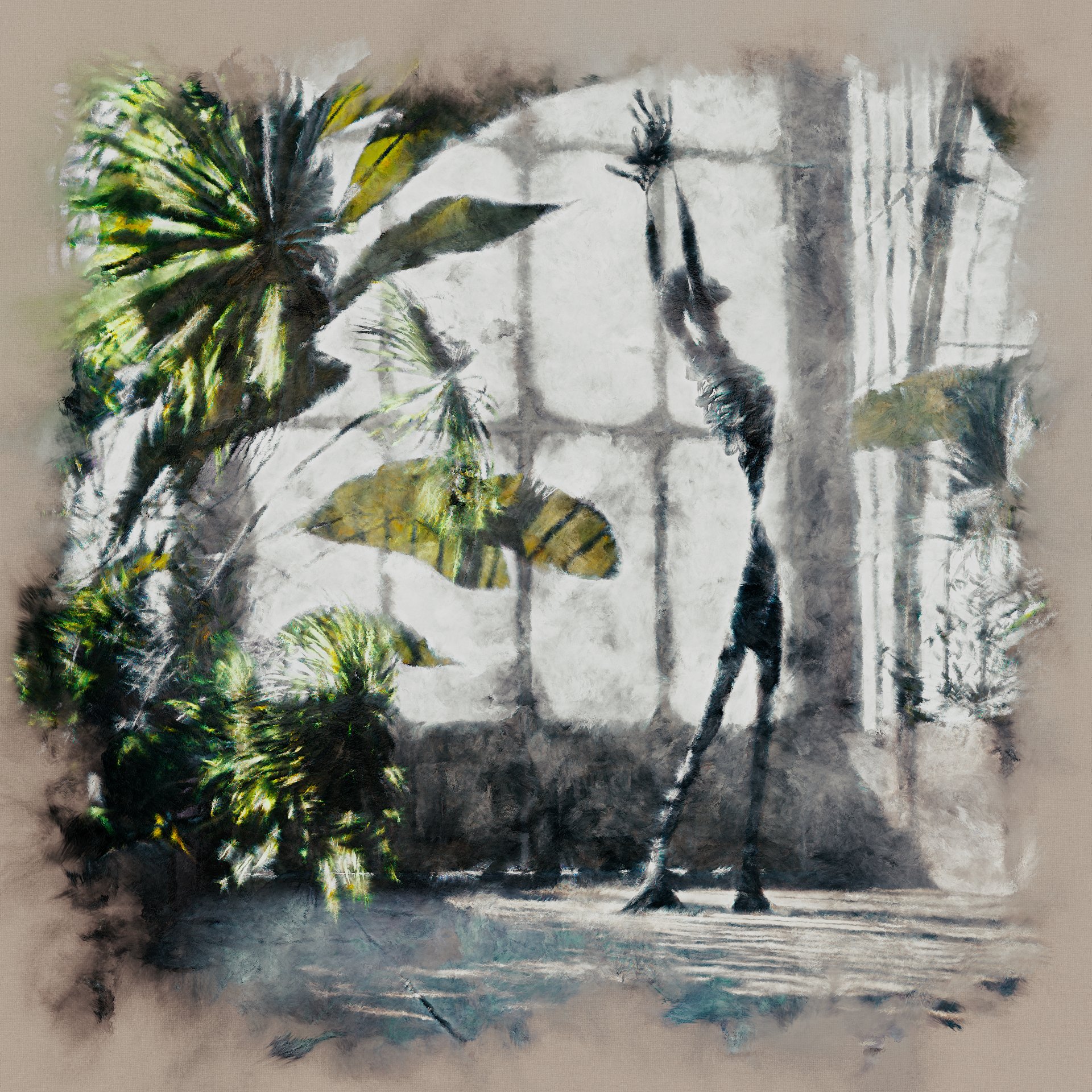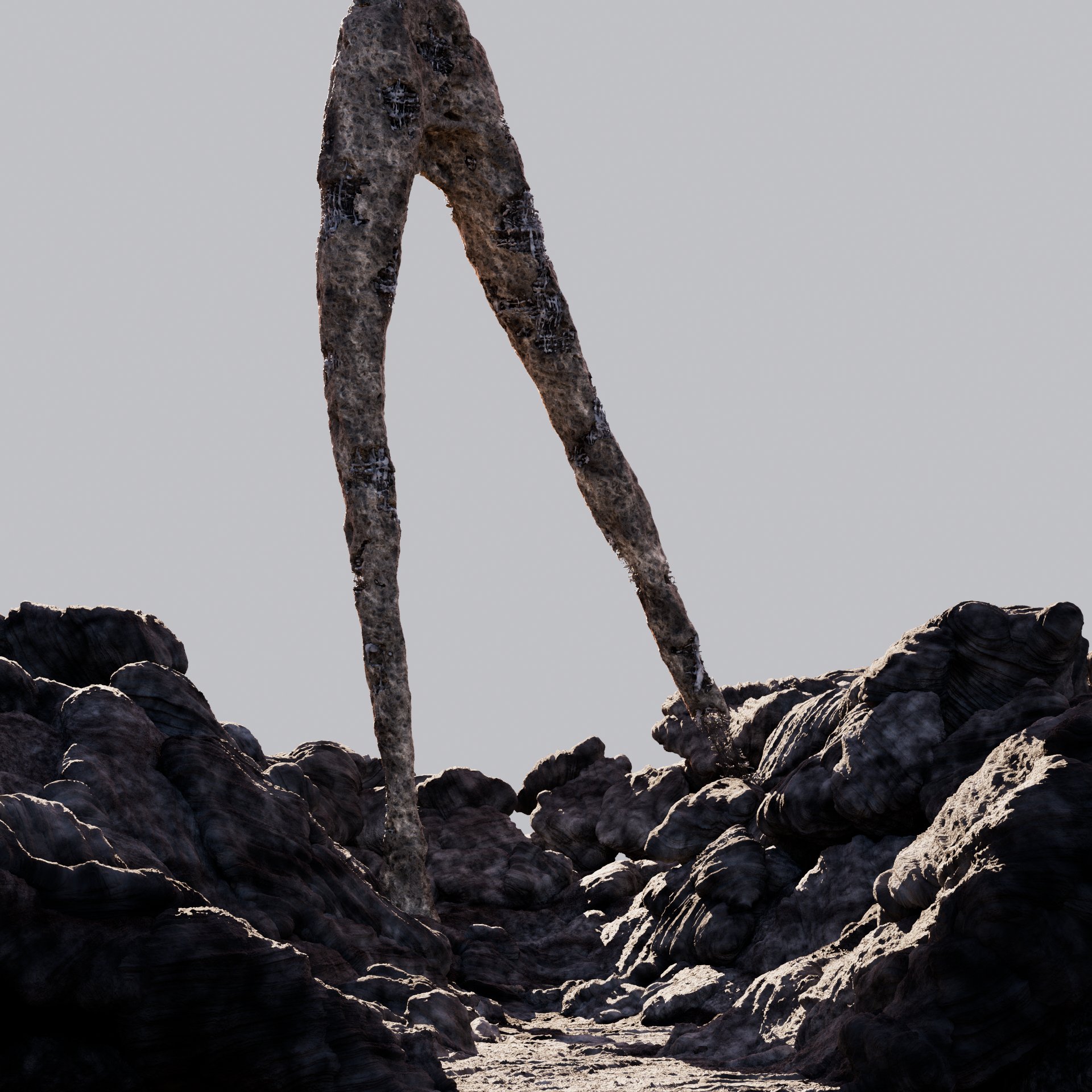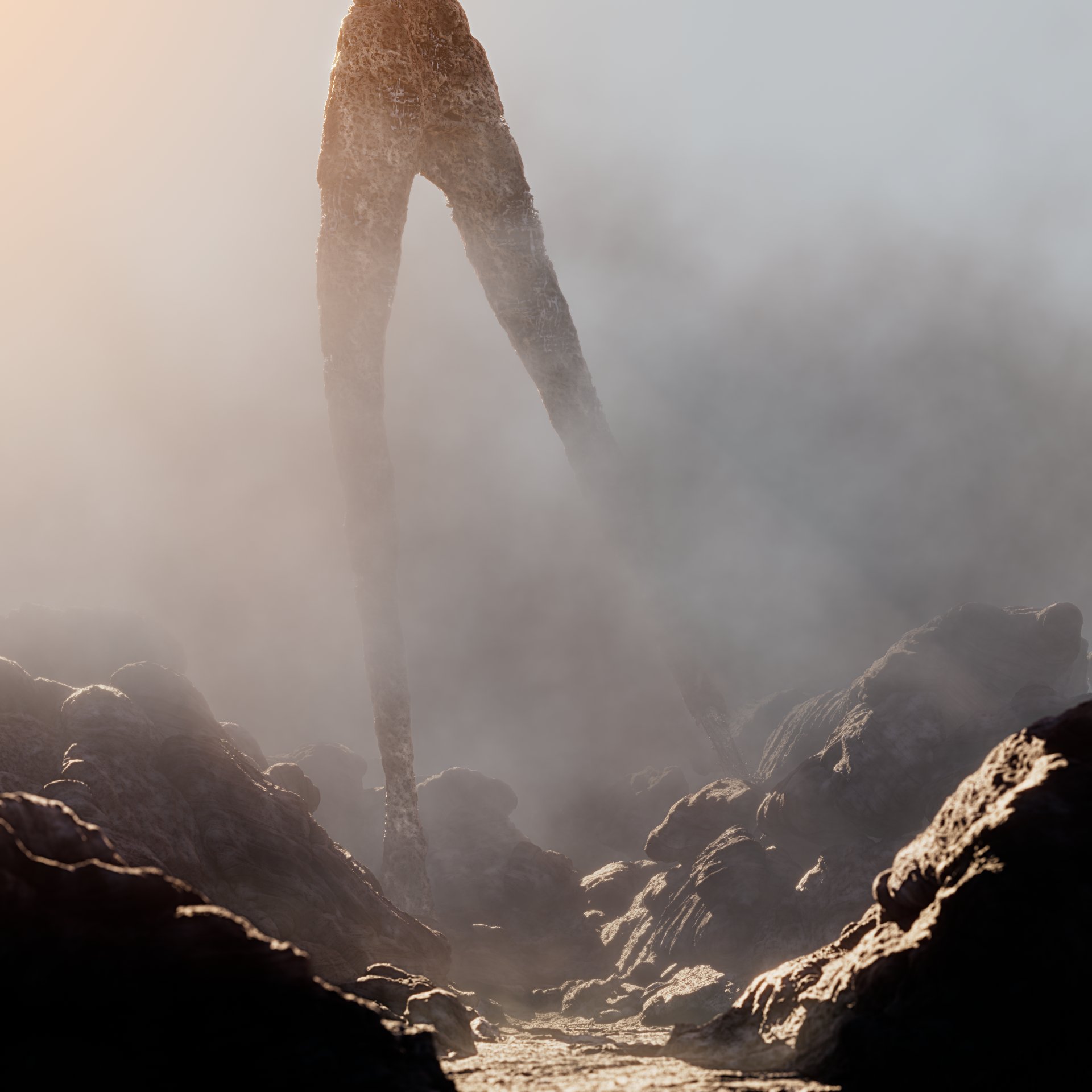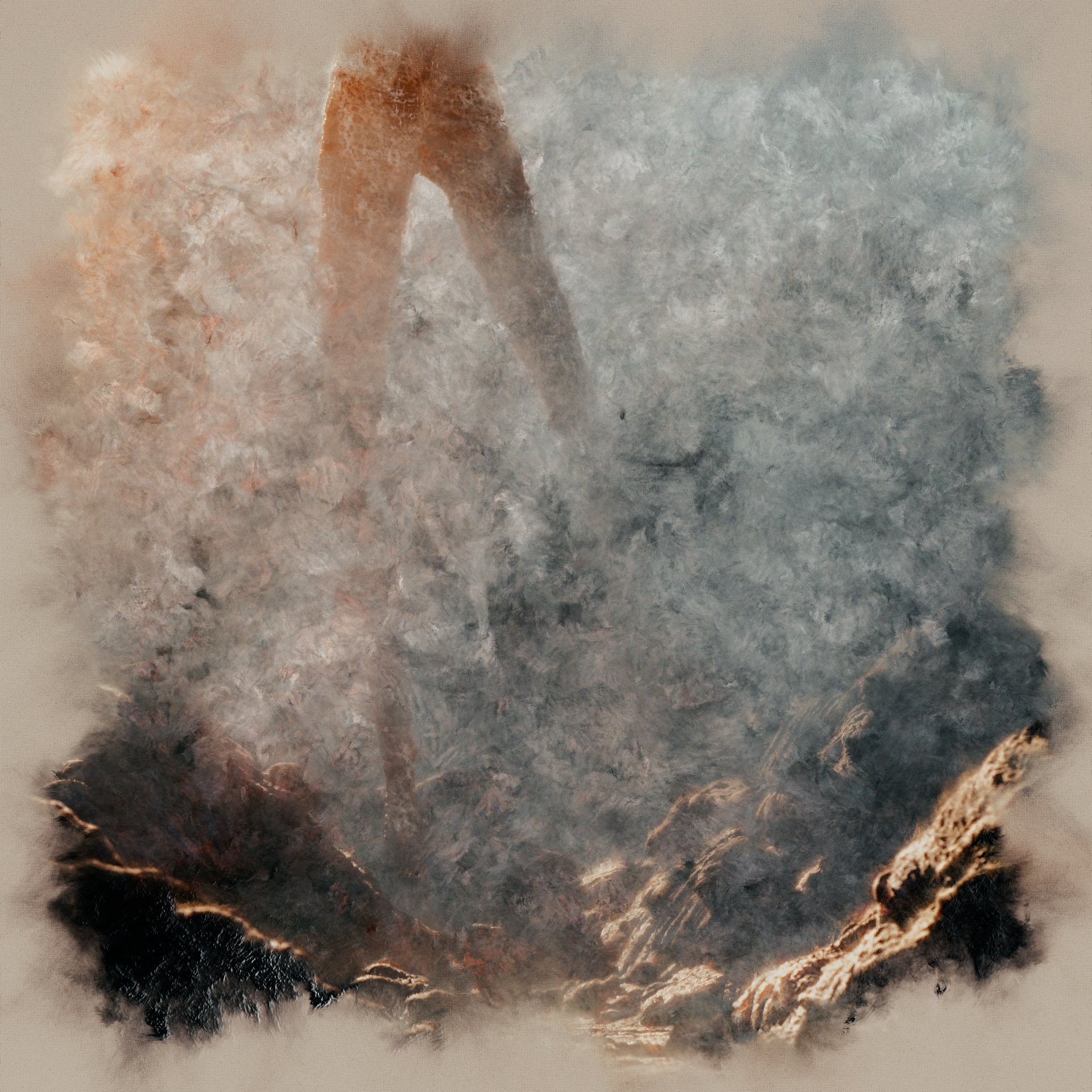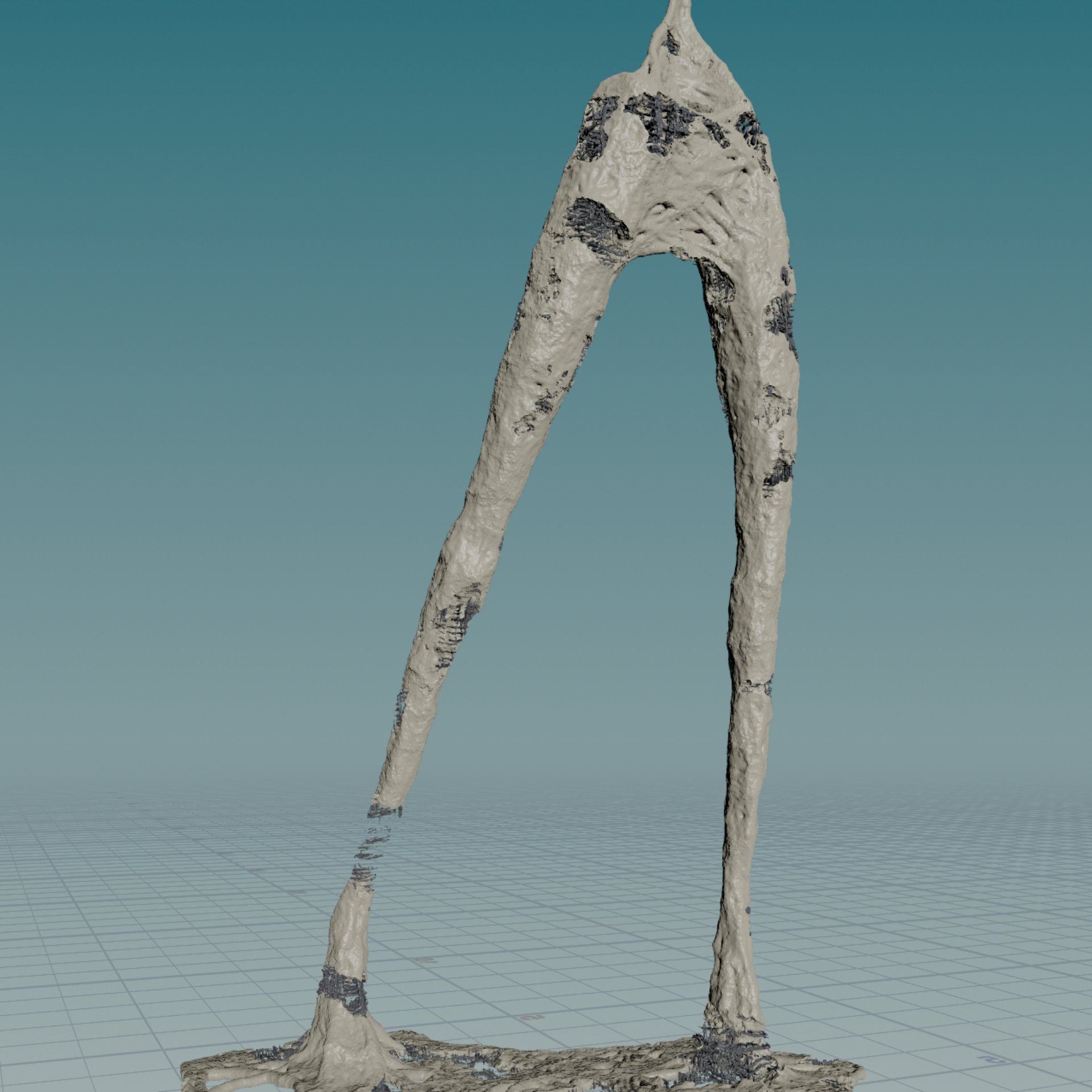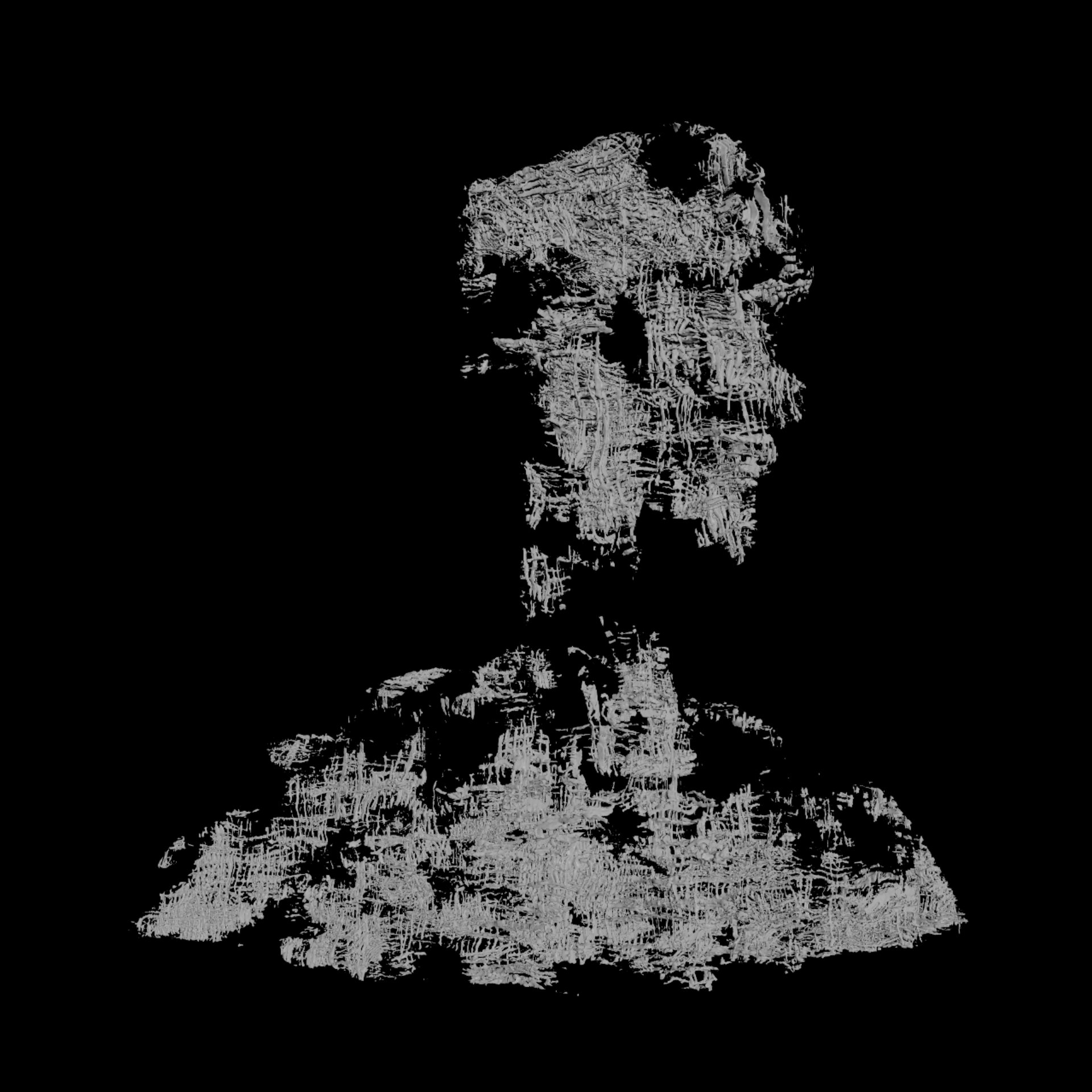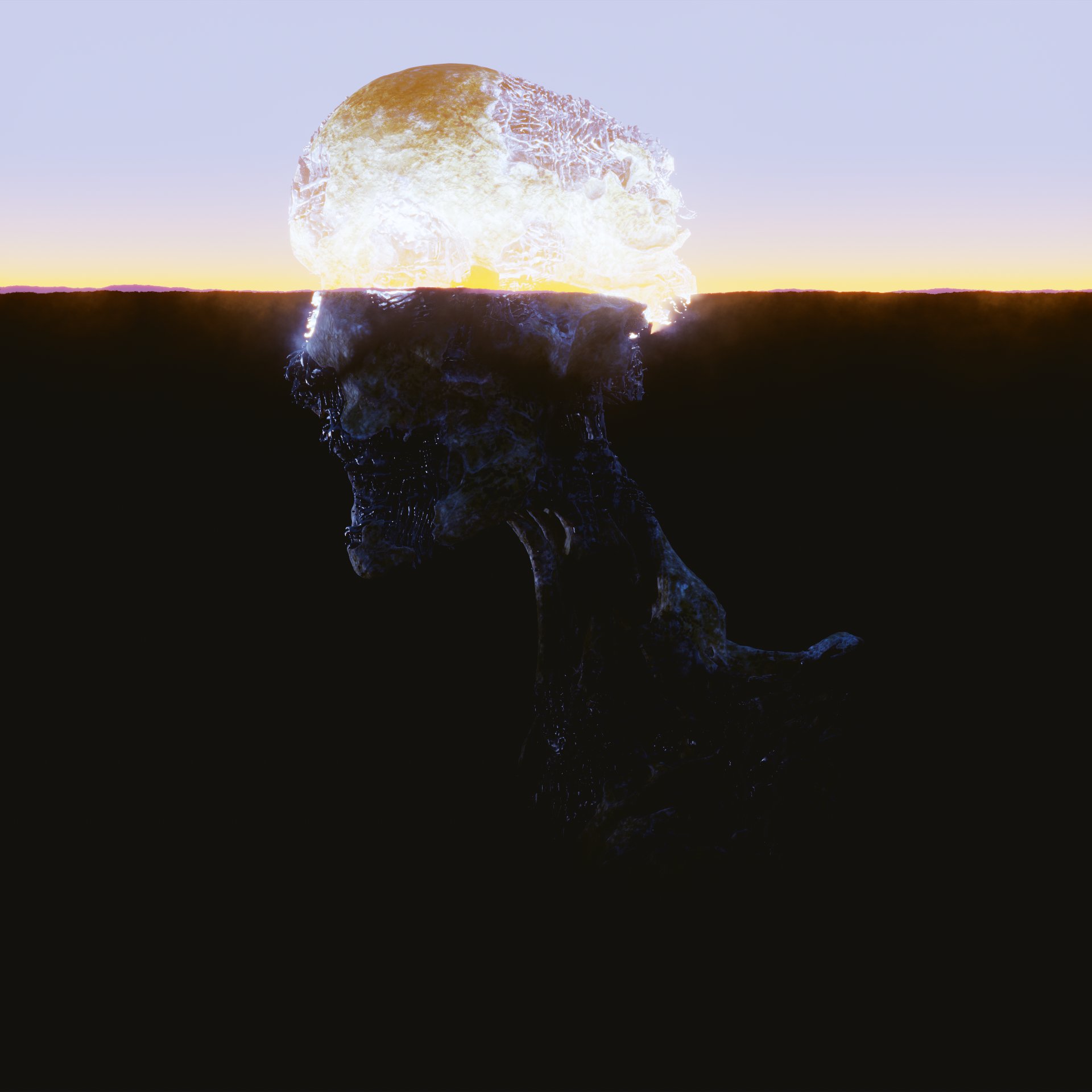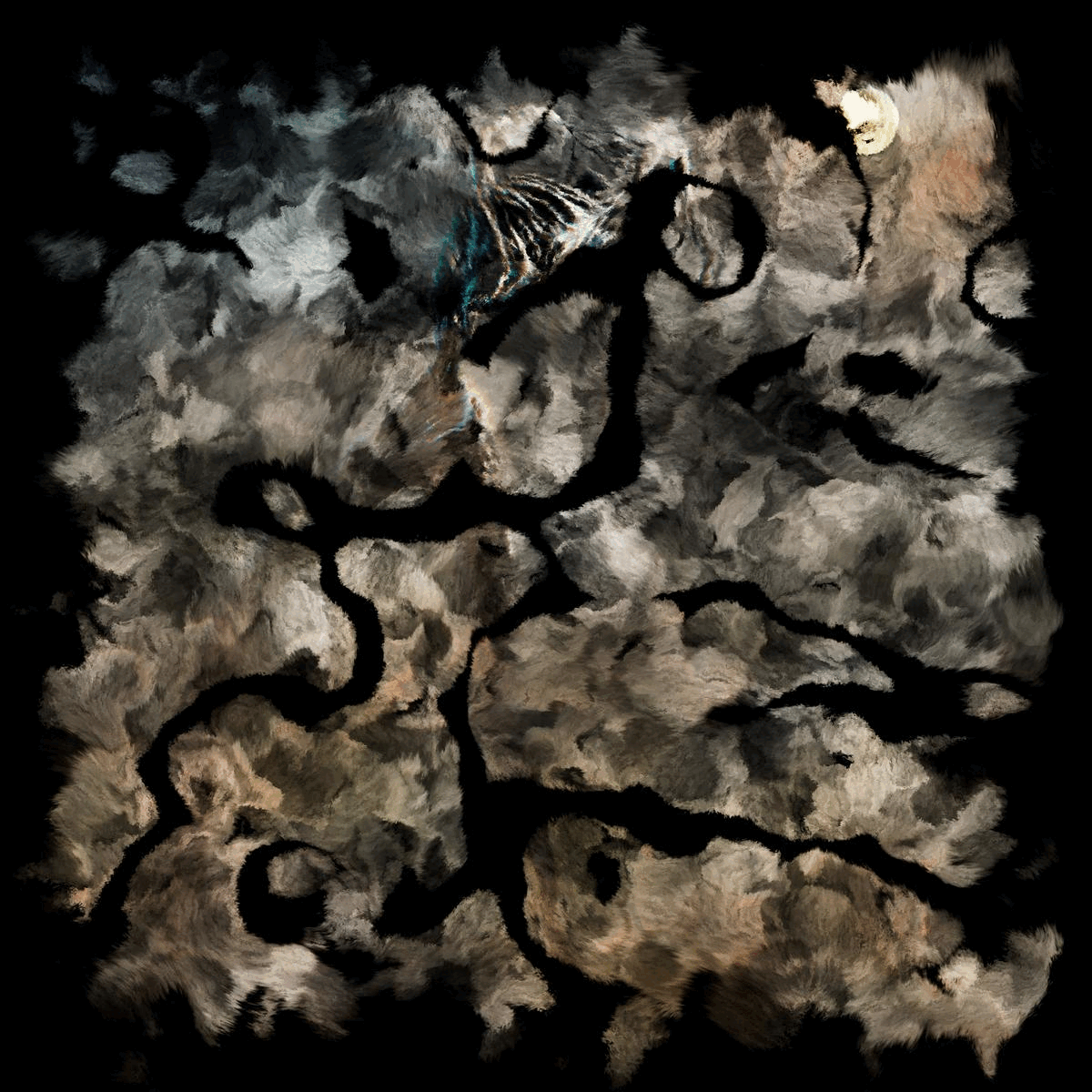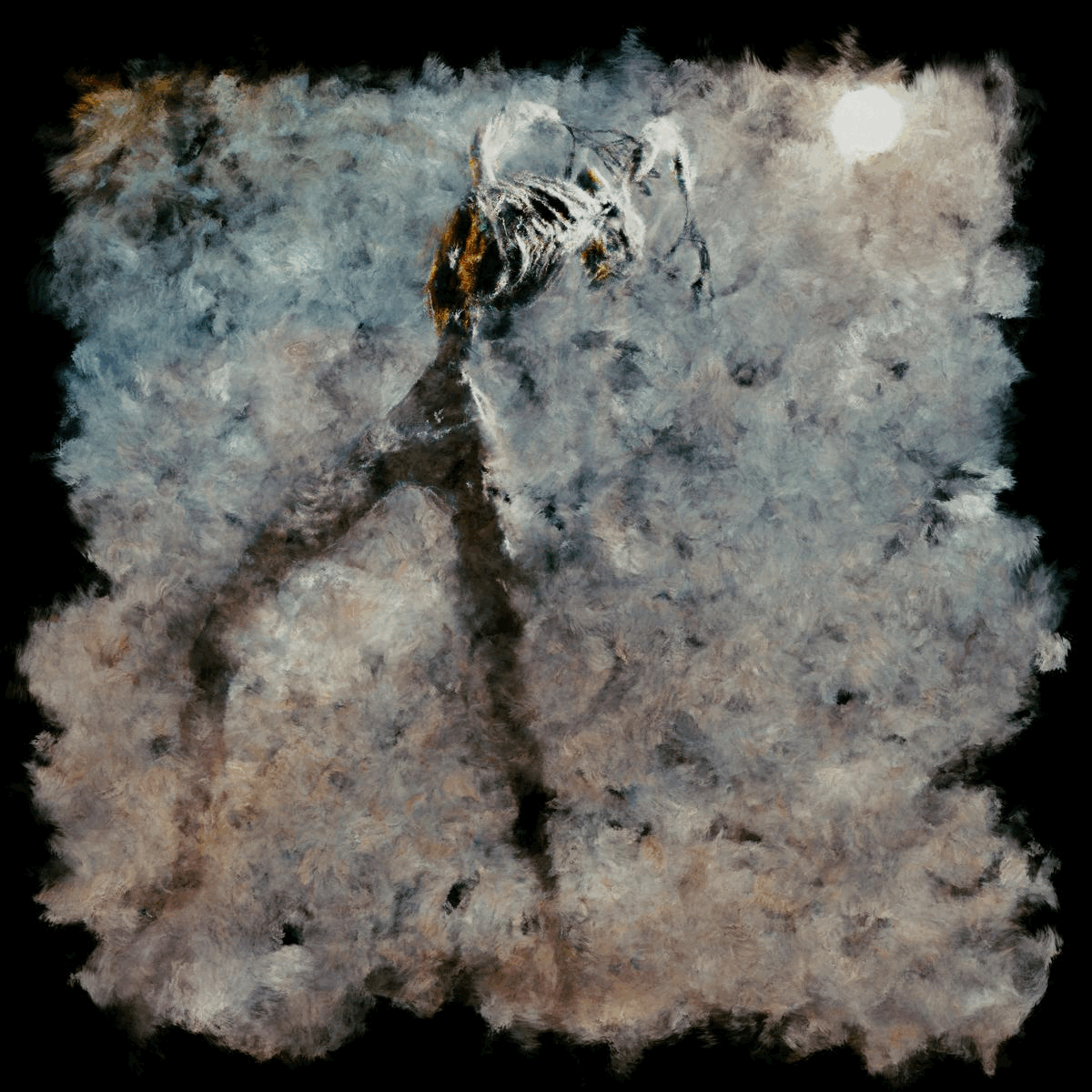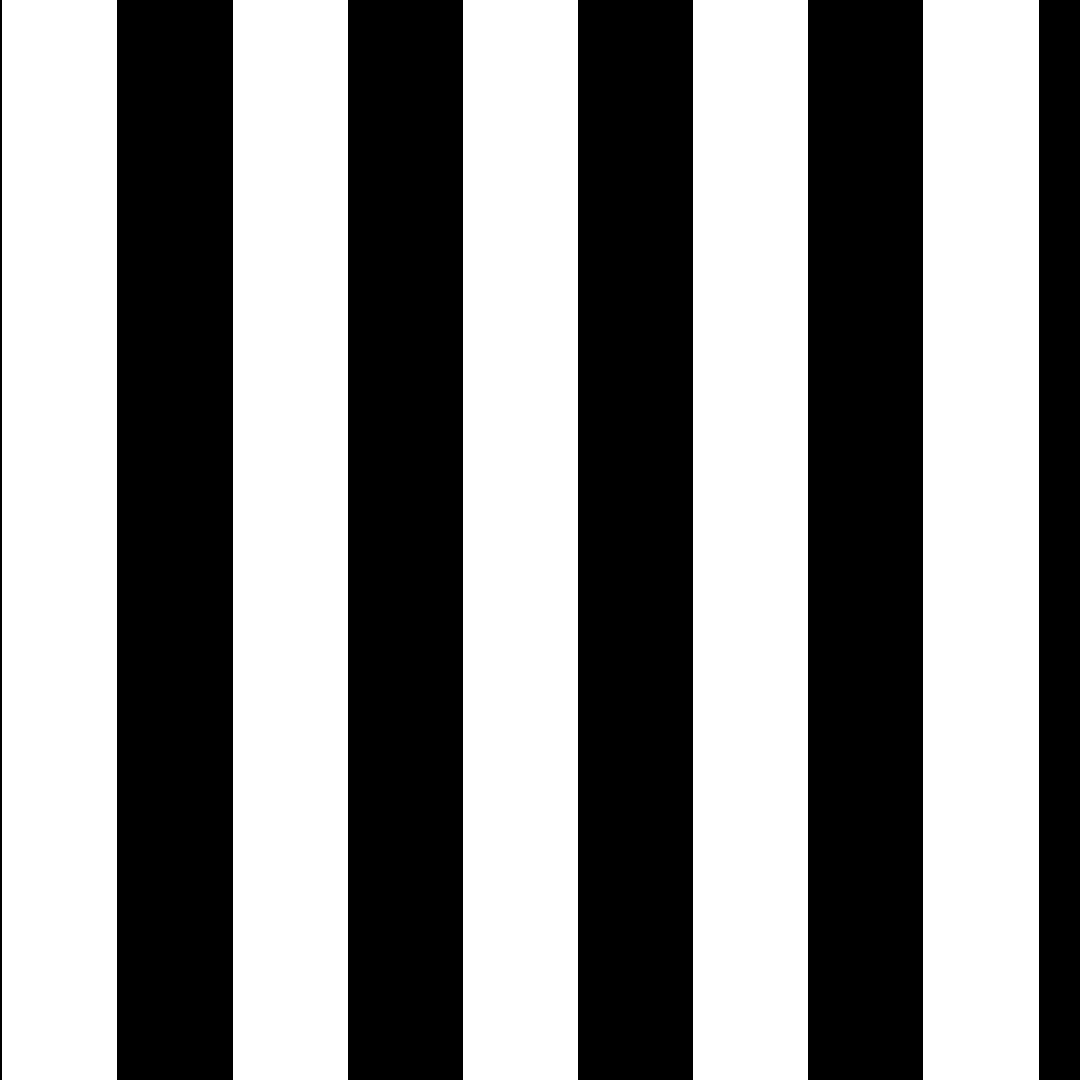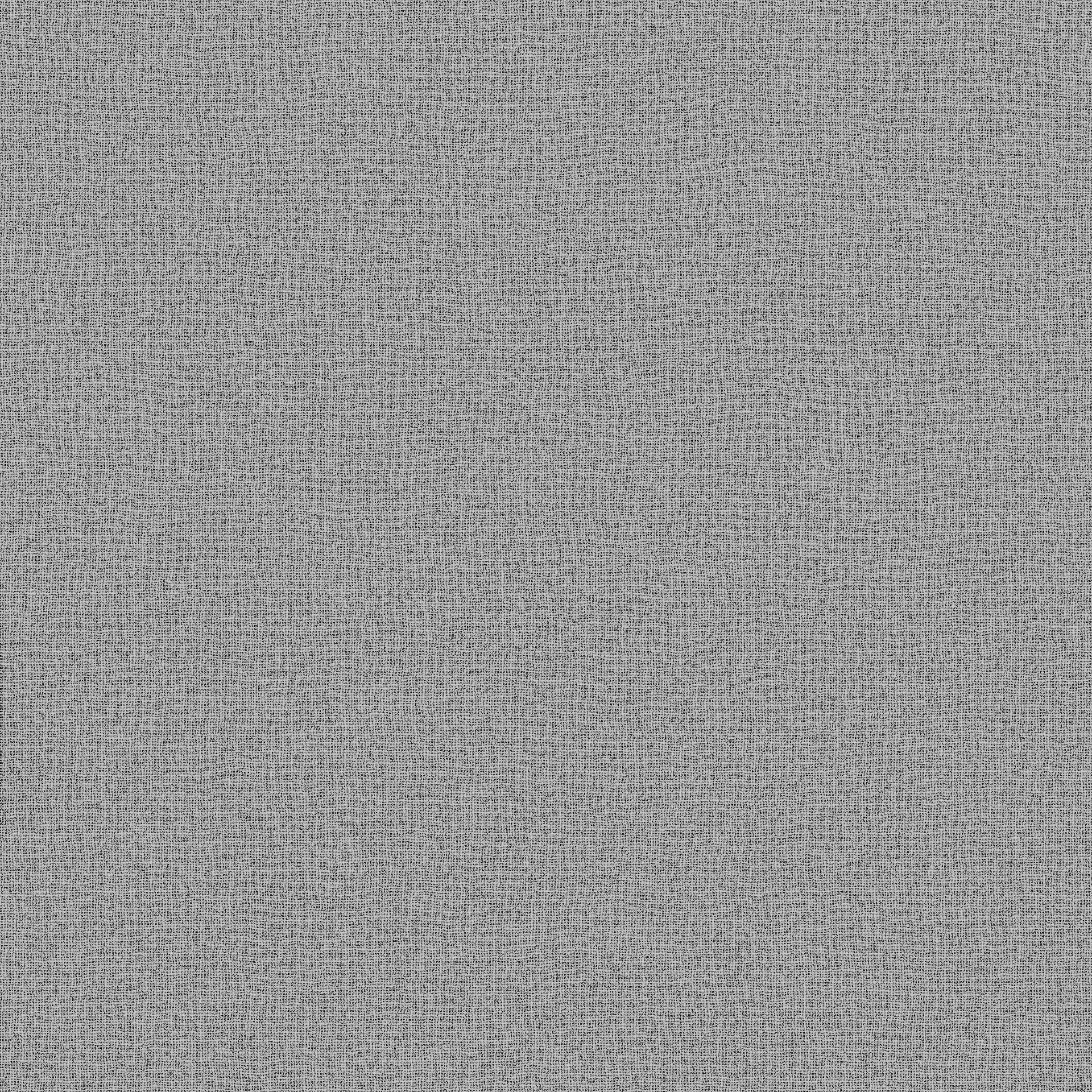Haunts
12 nightmare/dreamscapes, created in 3D and processed post-render to emulate an impressionist aesthetic. Inspired by the paintings of Zdzisław Beksiński.
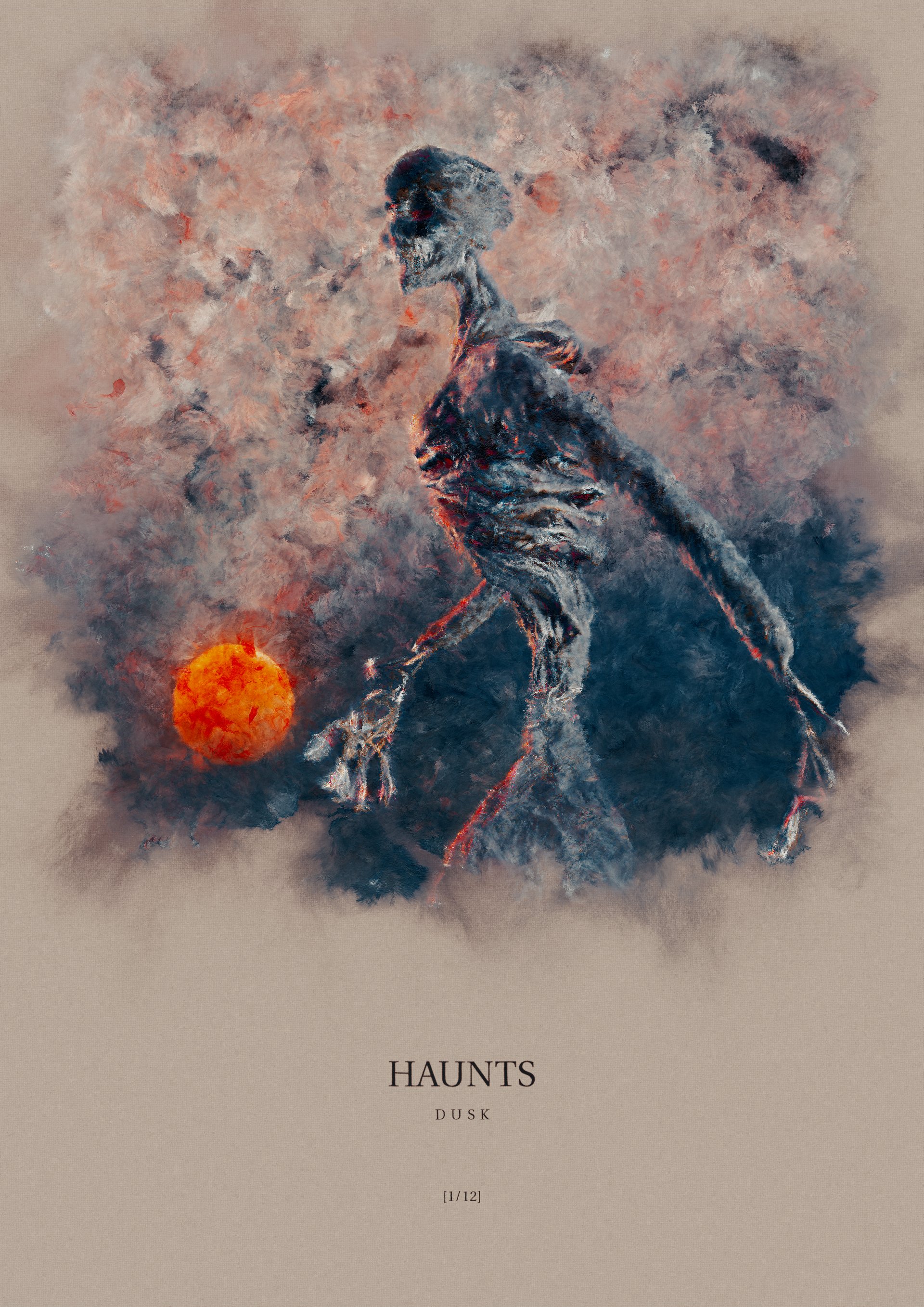
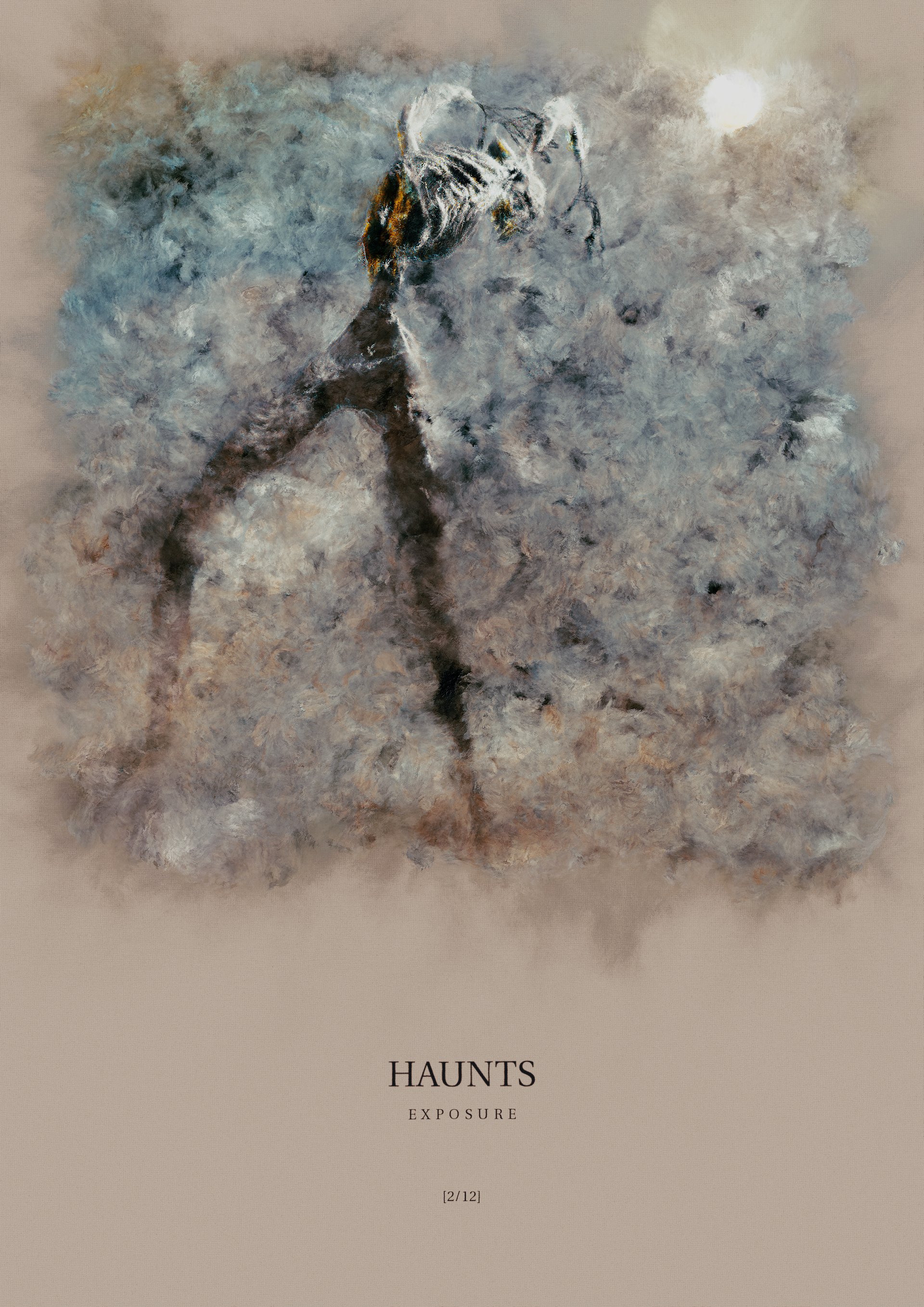
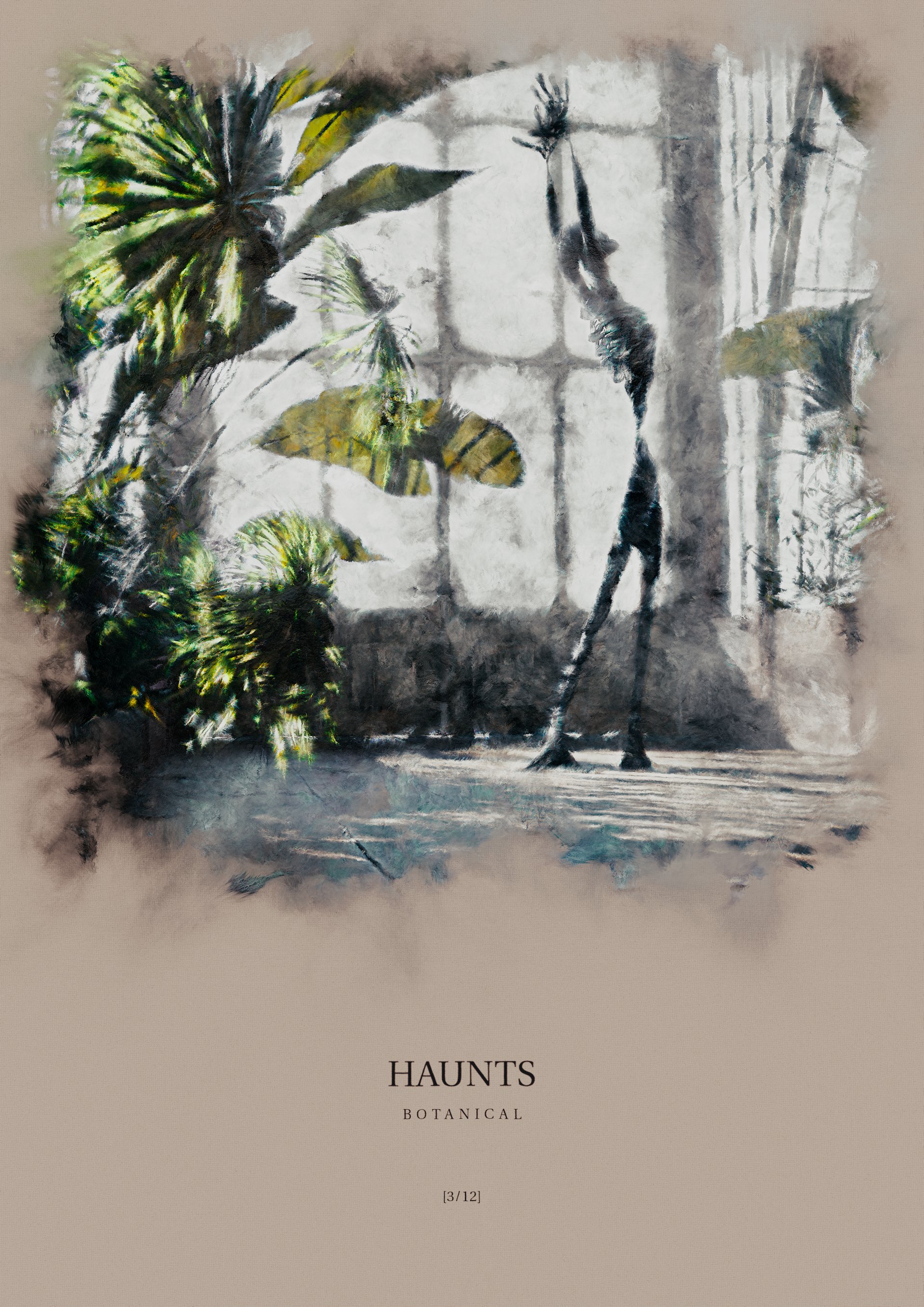
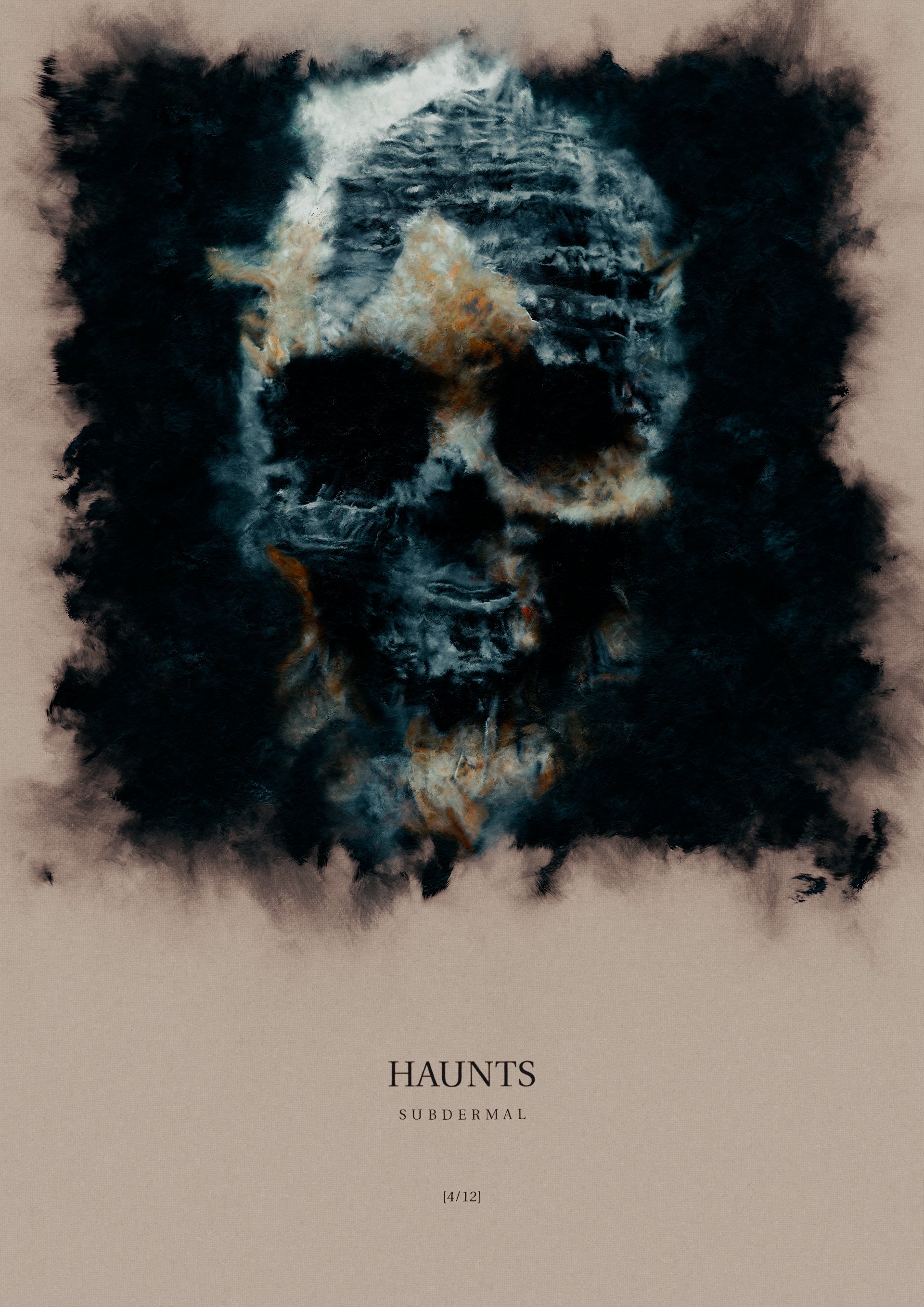
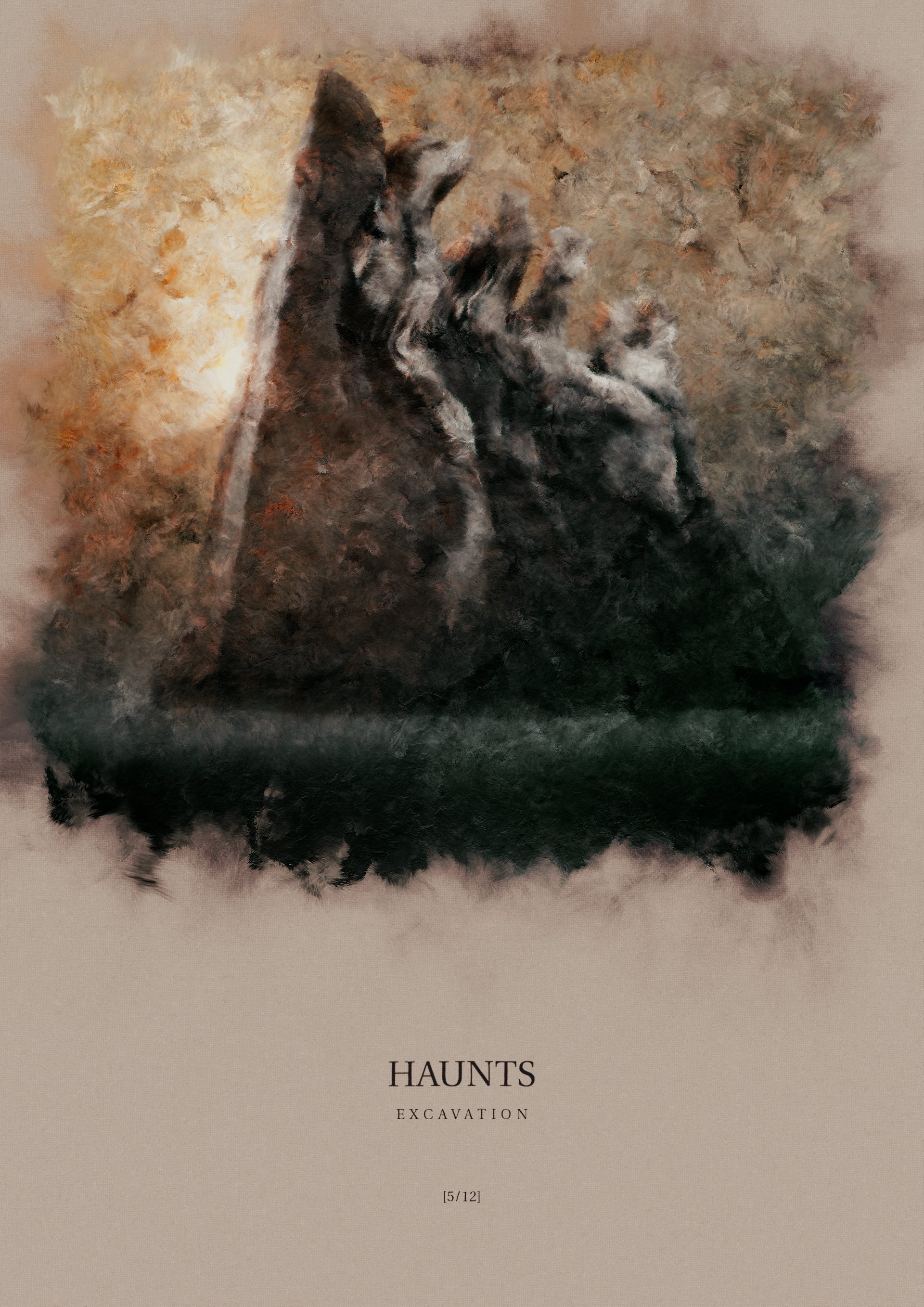
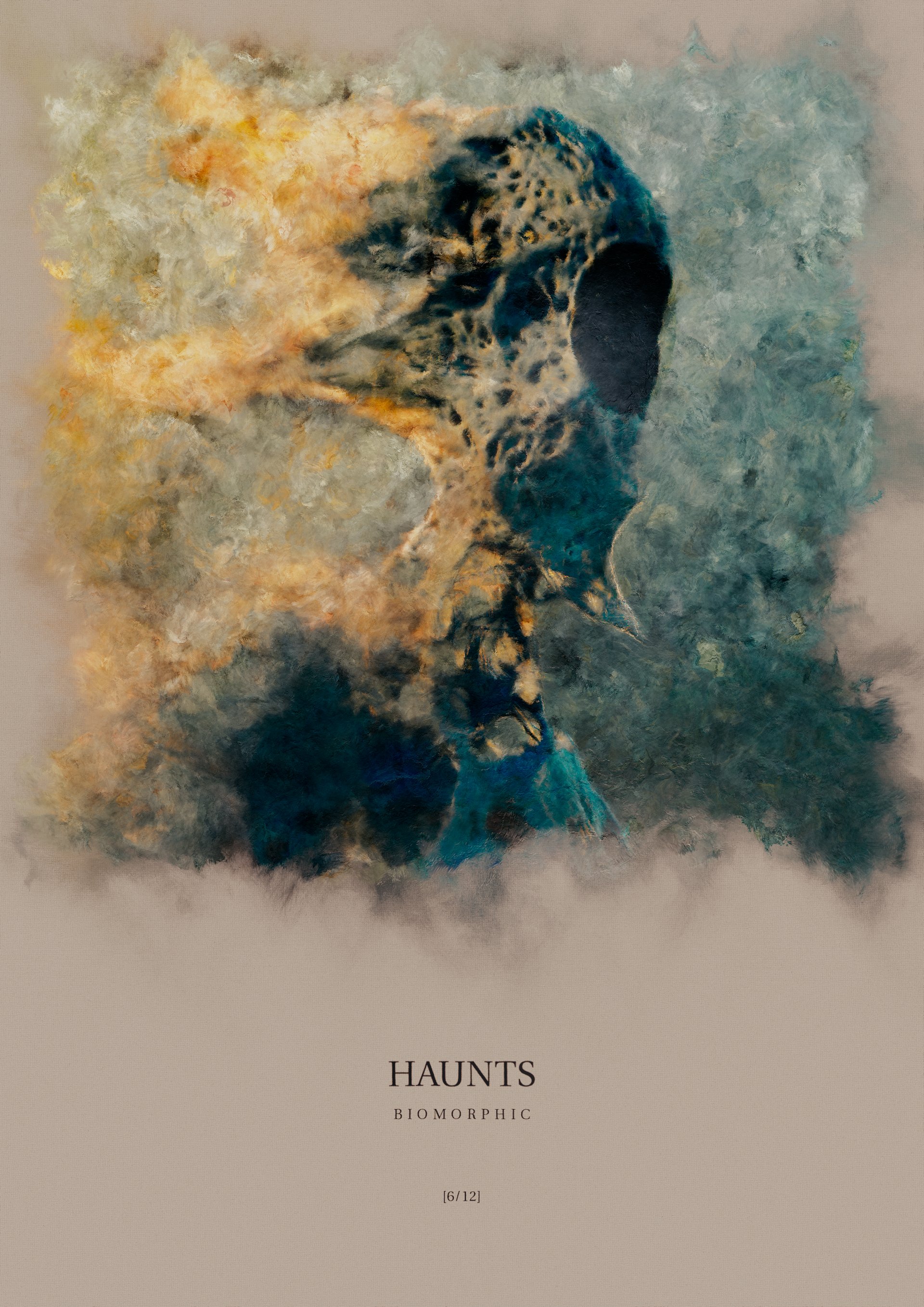
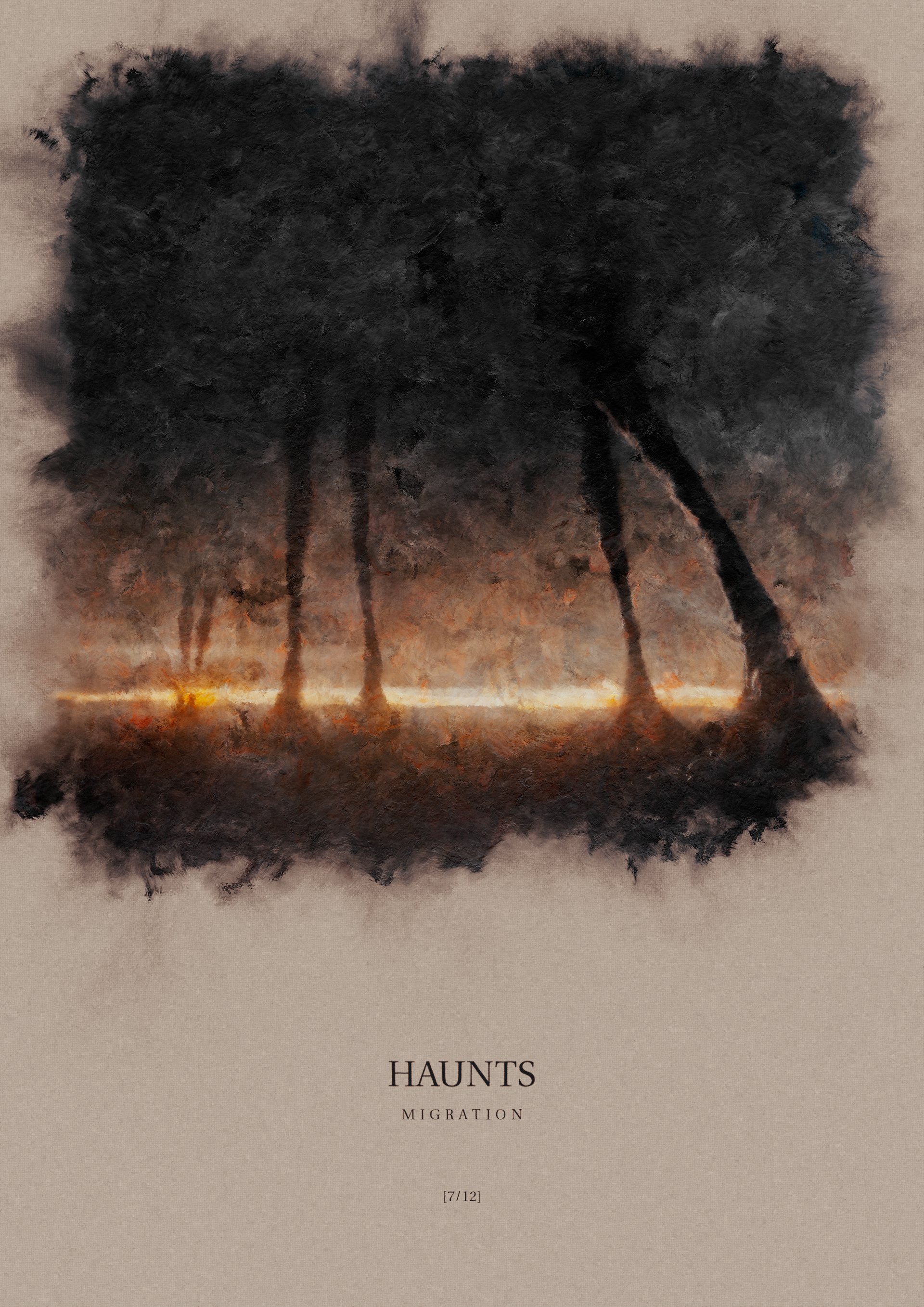
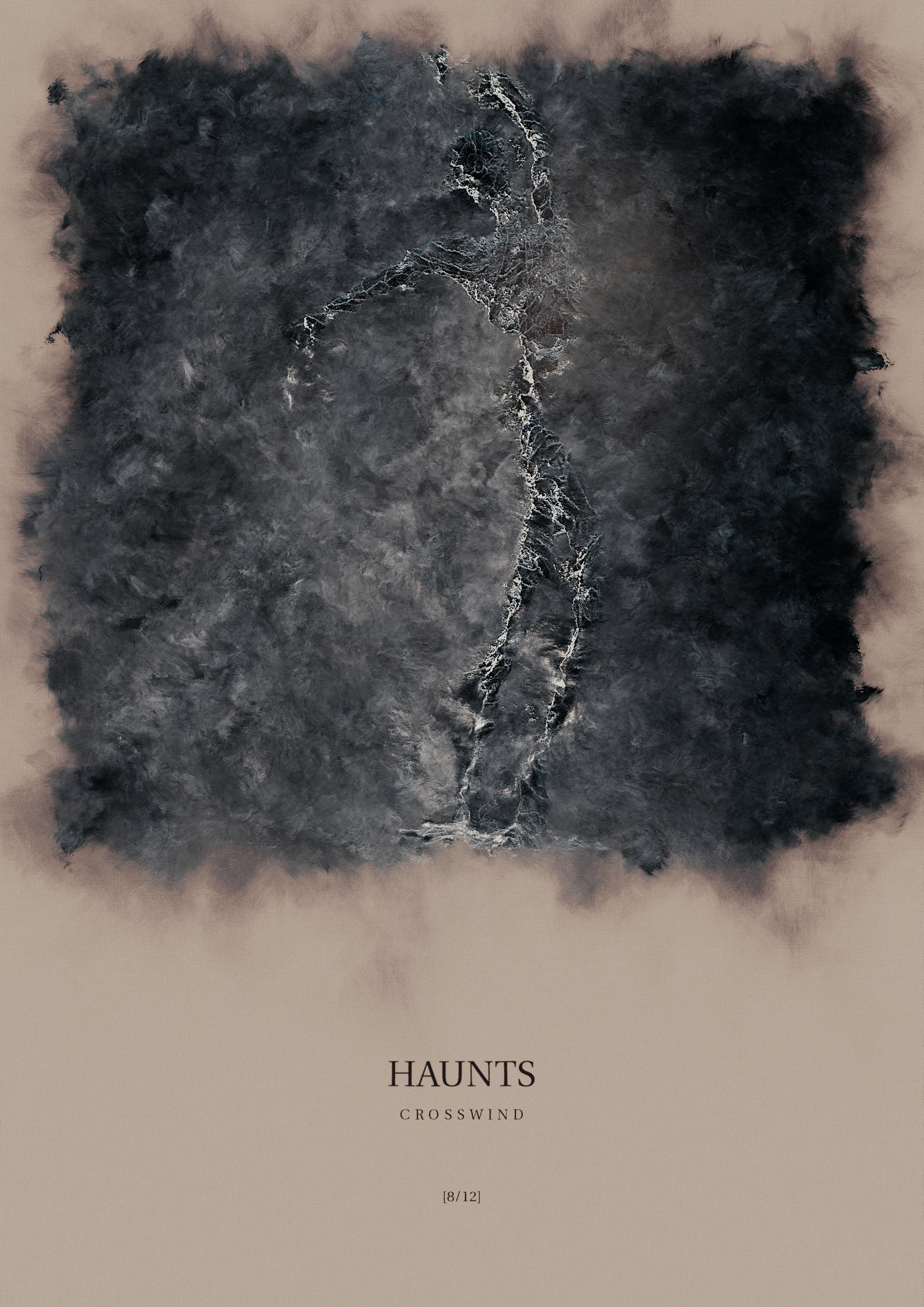
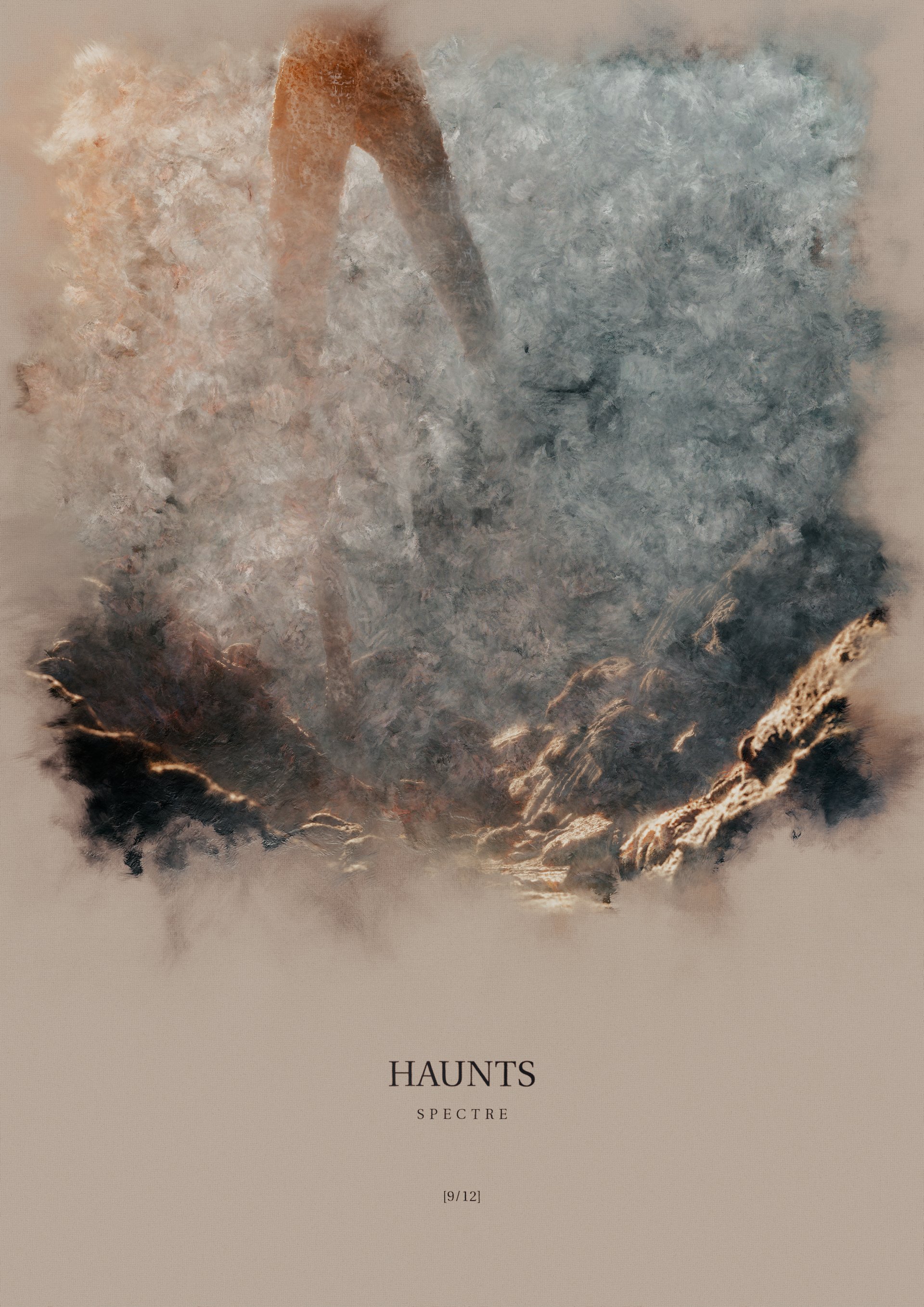
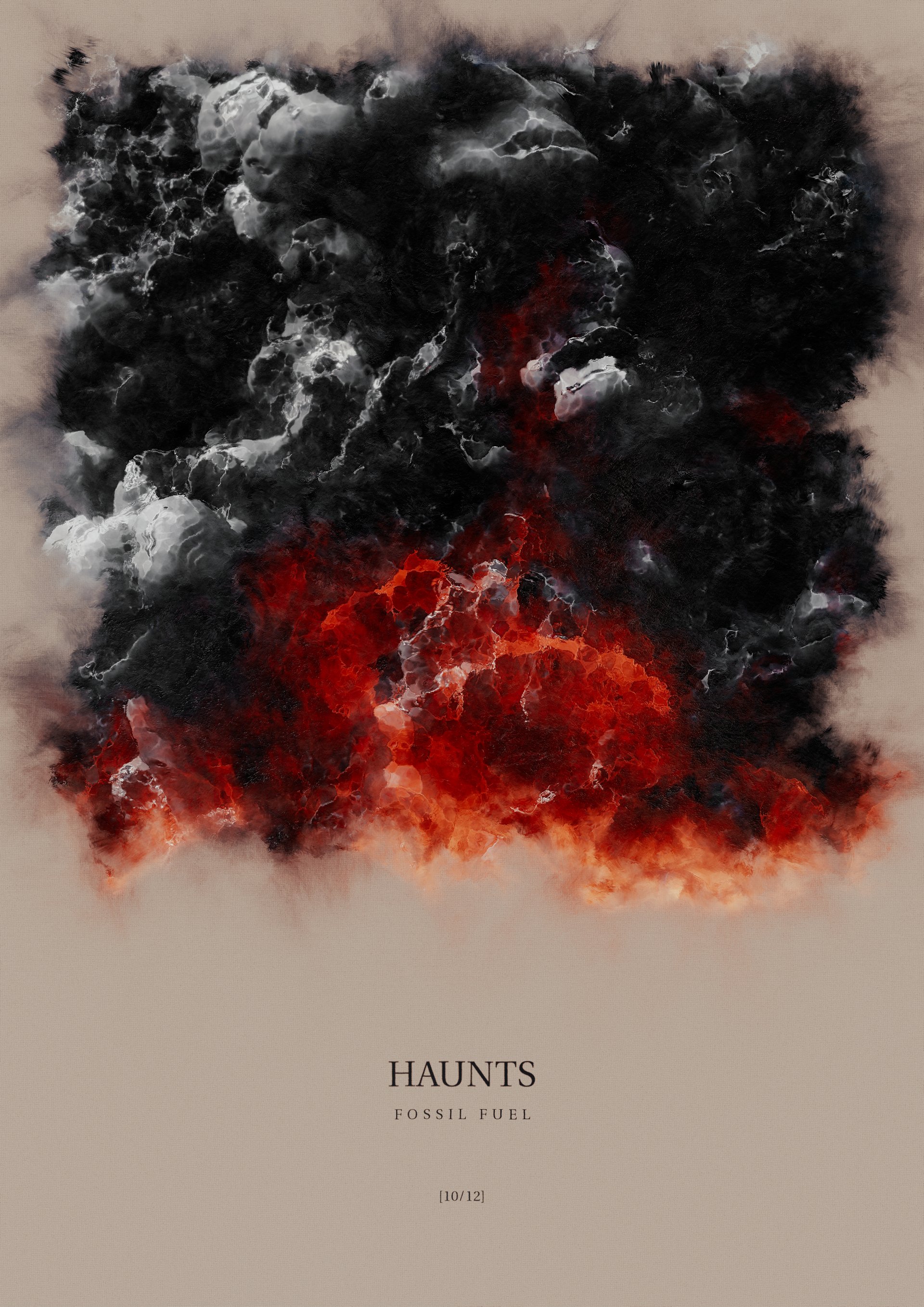
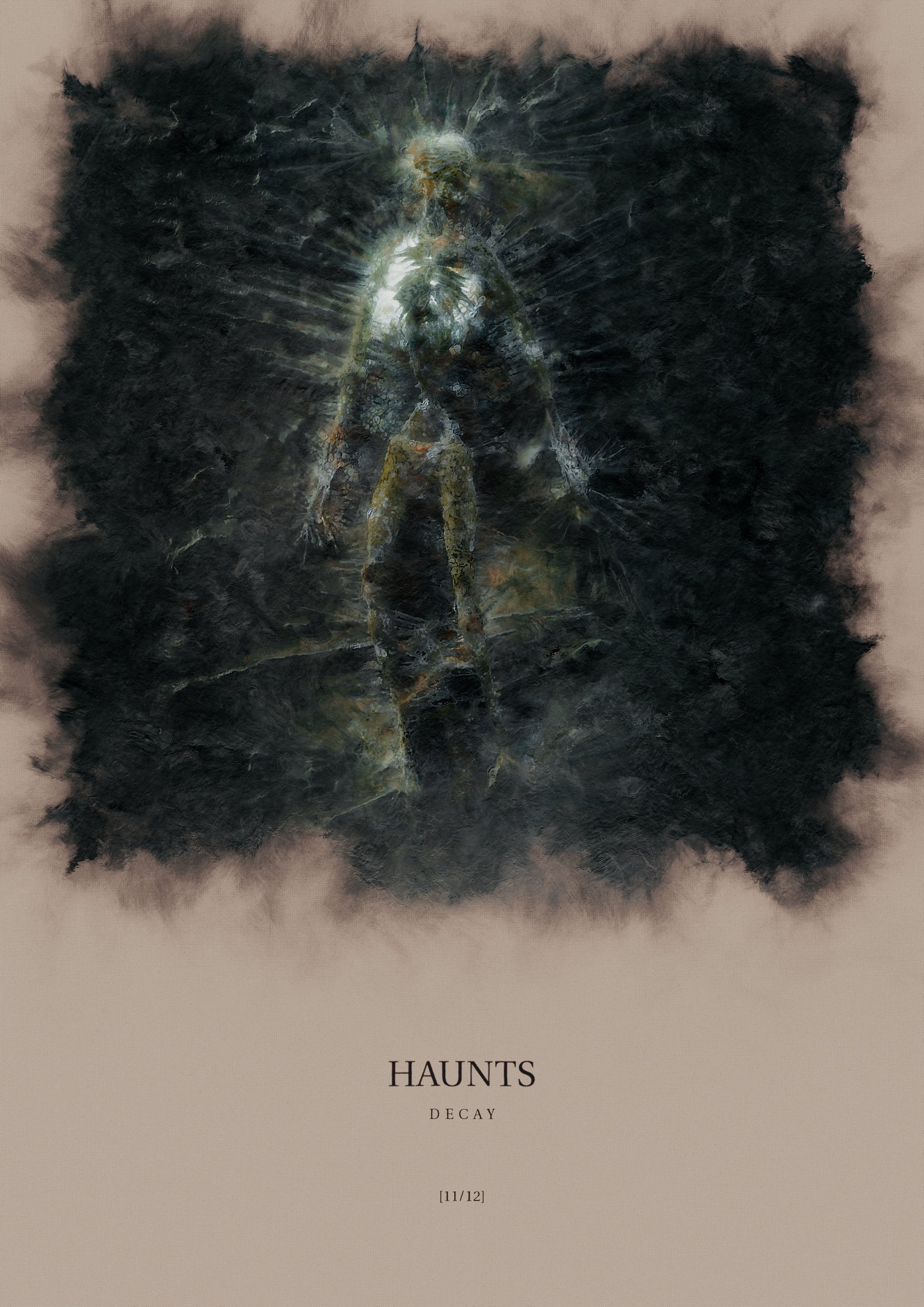
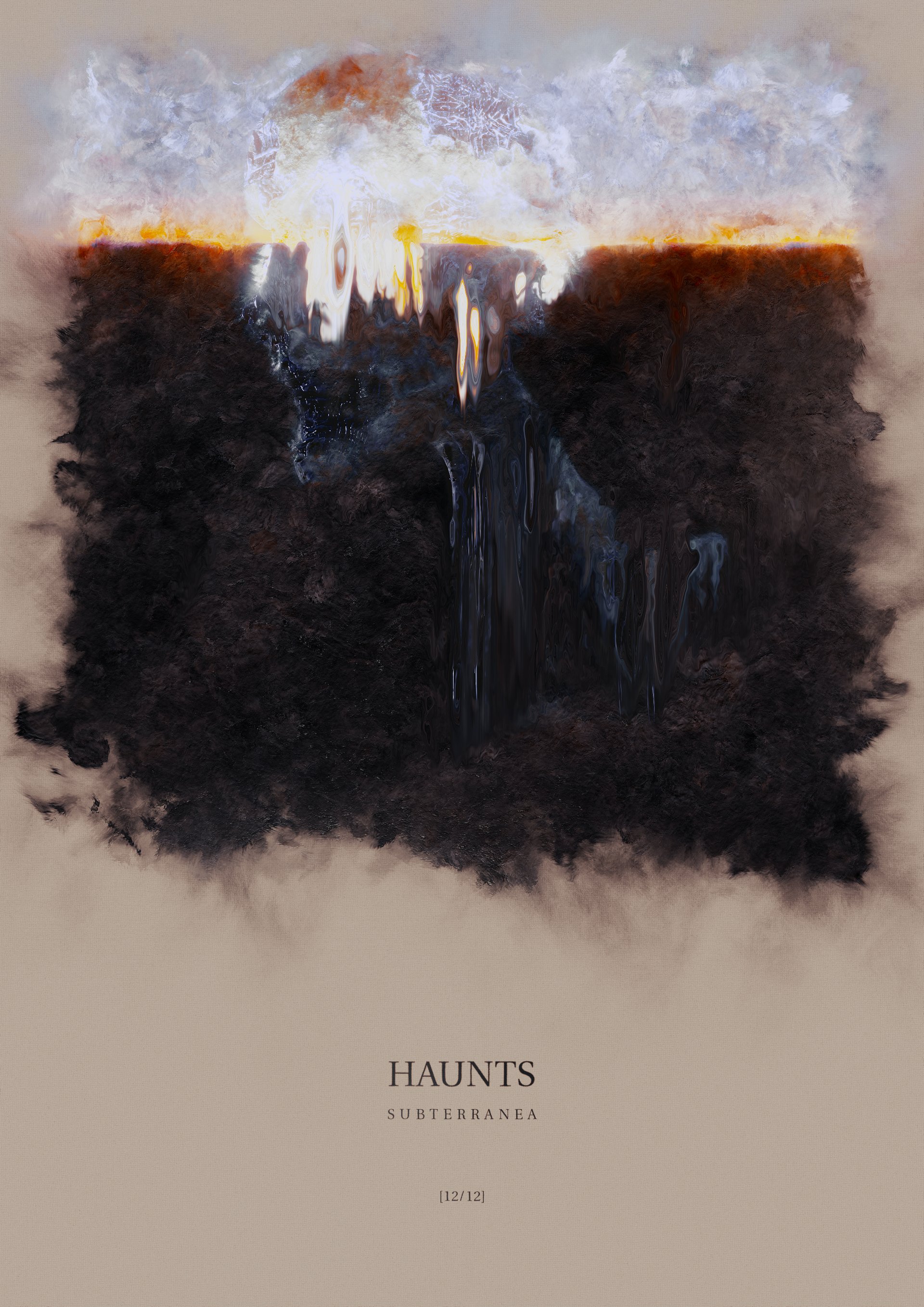
Asset Development
Look variant
Torso Build
The torso was built procedurally by taking an input posed rig and extracting a spine and sternum curve to draw rib cage geometry from.
By running through a for-loop to clone inwards, and manuplating the position of points based on the mirrored curveu attribute, the whole torso shape is controlled parametrically.
The arms were drawn by running a shortest-path curve generator over points scattered on the arms in the input posed geo.
Walking Man by Alberto Giacometti - reference
Inspiration / reference
Asset build steps
Head
The head was built by deforming a skull SDF with mirrored noises.
Basic skull model
Vellum shrink wrapping for watertight mesh
Various noises applied to the SDF for head shape, wrinkle, eye and teeth deformation
Asset Posing
By creating the asset based on a posed biped rig, each pose would have unique characteristics.
Environment
Various environments were constructed in Houdini.
Reference location, Kew Gardens
Viewport
Render
Composite /
Paint processing
Render
Composite
Paint processing
Beksinski Structures
One of the hallmarks of Zdzisław Beksiński’s work is the bone scaffolding interior supporting his structures.
Reference
Render/composite
Paint processing
Paint Processing
The second half of the project consists of impressionist paint emulation. This was achieved in Nuke using a variety of vector distortion, blurring and layer stacking.
Advection of noise field, driven by underlying render and fBm vectors
Accumulation of layers of “strokes”
Paint with hight dynamic range
Vector and noise advection
Canvas Texturing
I used layered sine waves to draw the canvas threads.
You can use sine waves for other styles of weave as well
The sine wave setup can be scaled infinitely, to any resolution, and distorted with noise.
Scaled down setup
